 By Pepper Parr By Pepper Parr
November 6, 2014
BURLINGTON. ON.
Local government works best when the people in the community play a meaningful role in the determination of what the tax rates should be and what the money raised is to be spent on.
Bureaucrats can`t do it all. In Burlington, many of the senior people don`t live in the city 0- their relationship with citizens is for the most part paper based and interactions at committee or Council meetings.
Burlington has a number of Advisory Committees – some work exceptionally well while others are a mess. This reporter has sat in on two Advisory Committee meetings where members were throwing copies of reports at each other.
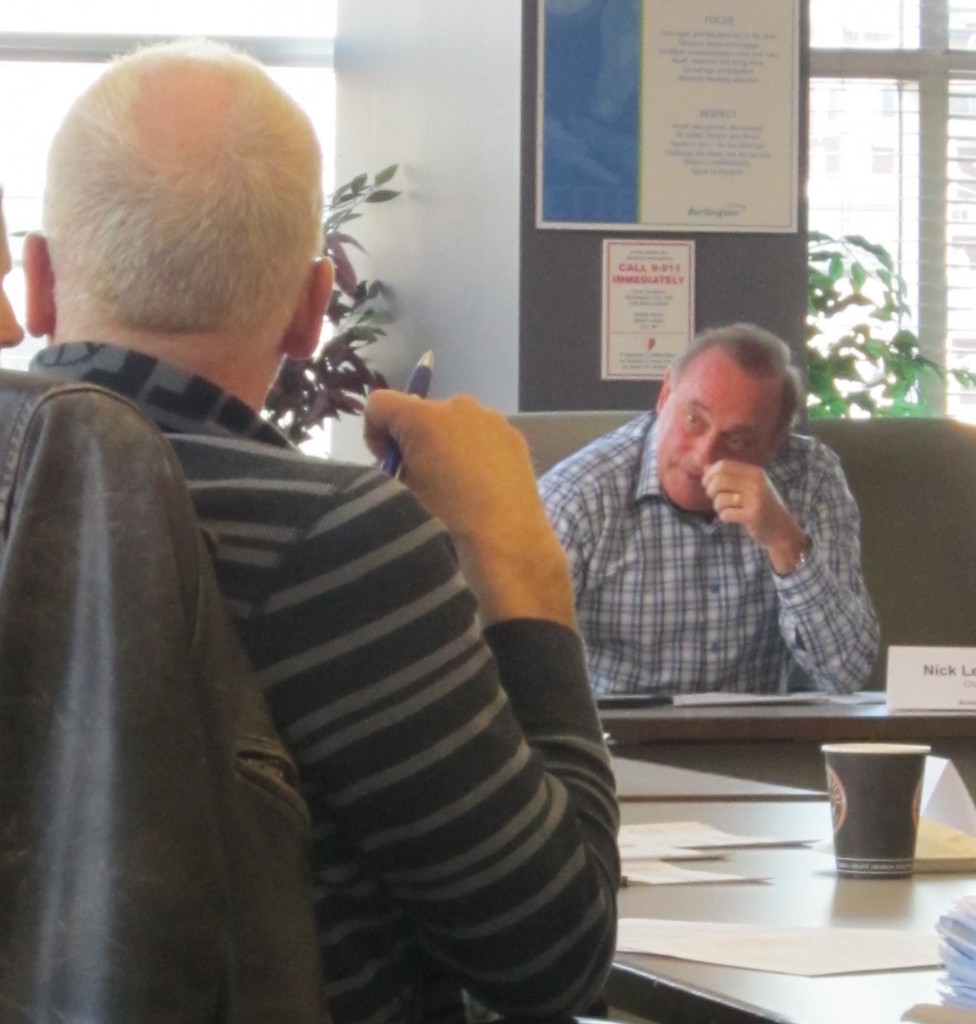 Nicholas Leblovic. chair of the now sunset Waterfront Advisory committee. Some Advisory Committees work well – others don’t. The city has created Advisory Committees and shut them down before they completed a full term; that was the fate of WAPA – the Waterfront Access and Protection Advisory committee that was the starting point for that startling decision of the Council that will end its tem at the end of the month.
There are Advisory Committees that do superb work – better than staff people at city hall. And there are Advisory Committees that are poorly chaired.
Who sits on the Advisory Committees?
The city runs advertisements asking for people to submit an application; they are reviewed, people are interviewed and the selections announced. The decisions of city hall staff who make the recommendations then go to Council where they are approved. There have been occasions when Council decide not to approve a particular person – that kind of a decision gets made in a closed session.
Thus the final word on who sits on those Advisory Committees is made by Council – they want to keep the trouble makers out – or do they want to ensure they will get people who will support what Council wants to see done?
Do Council members put names forward?
There are people in this city that do not agree with some of the policies city Council puts forward and they would like to see some form or organized opposition in place.
While municipal governments do not follow provincial or federal party lines – there are people who would like to see something in the way of an organization that is not specific subject based.
 The Official waterfront advisory committee was shut down by the city – citizens thought it important enough to have a committee and formed something independent of city hall. The Burlington Library is working with the city this year to put on an event that will let people learn more about the different advisory committees. The event will include committees that are not part of the civic administration.
The event: An Introduction to Boards and Committees, takes place on November 19th at the Central Library – starts at 7:00 pm. Oddly enough it doesn’t appear on the Library calendar and the city hasn’t said a word about it publicly. Disapointing.
The city has since advised that the event is n the city web site and that paid advertising is to appear soon.
While a large part of the city population lives south of the QEW – there are a lot of people north of that stretch of pavement. Why isn’t an event like this held in Alton in the recreational complex up there? This would give the people north of Dundas and those to the immediate south a chance to really participate.
Among the Boards and committees that will have representatives at the event are:
Burlington Accessibility Advisory Committee
Burlington Cycling Advisory Committee
Sustainable Development Advisory Committee
Heritage Burlington Advisory Committee
Senior’s Advisory Committee
Inclusivity Advisory Committee
Mundialization Committee
Committee of Adjustment
Downtown Parking Advisory Committee
Burlington Public Library Board
Burlington Museums Board
Doors Open Volunteer Organizing Committee
Canada Day Committee Organizing Committee
Christmas Parade Committee
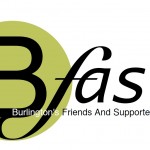 Bfast is an independent group that is well informed on transit matter. They delegate frequently. We understand that BFast (Burlington For Accessible Sustainable Transit) will also have a table for people who want to be involved in transit issues.


By Pepper Parr
November 6, 2014
BURLINGTON, ON
In his day he was one of the heavy hitters at Queen’s Park. He ran the elections that got Dalton McGuinty elected and re-elected. He had his own problems with an inquiry and was totally cleared. He experienced a little too much zealousness on the part of the police.
A new session of Engaging Ideas, proudly hosted by A Different Drummer Books and Burlington Public Library, features a guest renowned for his achievement and experience and for his insight into our political process:
 Greg Sorbara in the Legislature – always on his feet with the facts at his finger tips. A senior figure in Ontario’s governance, as long-serving MPP, as Liberal Party president and as Minister of Finance, Greg Sorbara will take his audience through the many colourful challenges of his long and extraordinary career, and share the startling facts and opinions newly revealed in his candid and provocative memoir.
“This is a lovely, insightful book from one of modern Ontario’s most influential figures. It provides deep insight and personal reflections on both the policy process and the real-world of politics from a man who has shaped the evolution of Ontario as much as anyone in the past three decades.”: that’s how Matthew Mendelsohn, a former senior federal and provincial civil servant describes the book.
The Battlefield of Ontario Politics on November 17 at 7pm at Centennial Hall, Burlington Central Library, 2331 New Street. Tickets are $10, available at A Different Drummer Books and at the Third Floor Information Desk at the Library.
Sorbara has been a member of the Ontario Liberal Party, and served as a member of the Legislative Assembly of Ontario from 1985 until 1995, and then from 2001 until 2012, most recently representing the riding of Vaughan. Sorbara served as the Minister of Finance in the Liberal government of Premier Dalton McGuinty from 2003 to 2007.
He differed with Premier David Petersen on the calling of the 200xx election – won his seat but the Liberals lost that election. He ran for the leadership of the party; lost to Lynn McLeod.
He was a supporter of Dalton McGuinty and did all the backroom thinking for each of the McGuinty elections.
He resigned on October 11, 2005, following a police investigation involving his family’s real estate development firm and was reinstated on May 23, 2006 after a judge ruled that there was no cause for including Sorbara’s name on a search warrant.
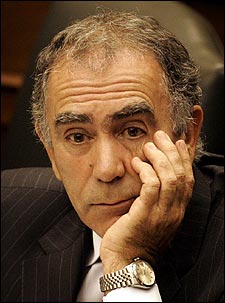 Greg Sorbara during the public investigation days. He was totally cleared of any wrong doing. Sorbara chaired the party’s successful 2007 election campaign but announced on October 26, 2007 that he was leaving the cabinet to spend more time with his family but would continue as a backbench MPP.
On August 1, 2012, Sorbara announced that he was retiring from the legislature but would stay on as chair of the Liberal’s election campaign.
He will be at the Central Library on November 19th – should be a fine evening. The man has a great story to tell.

 By Pepper Parr By Pepper Parr
November 3, 2014
BURLINGTON, ON
There are believed to be between 500 and 250 homes in Burlington that were damaged by that August 4th flood that were either uninsured or under insured.
The citizens of Burlington have pulled together and raised $800,000 to date with the expectation that the amount will grow to $1 million by the end of the fund raising campaign.
Now – time to begin putting that money to good use and helping the people whose homes were damaged.
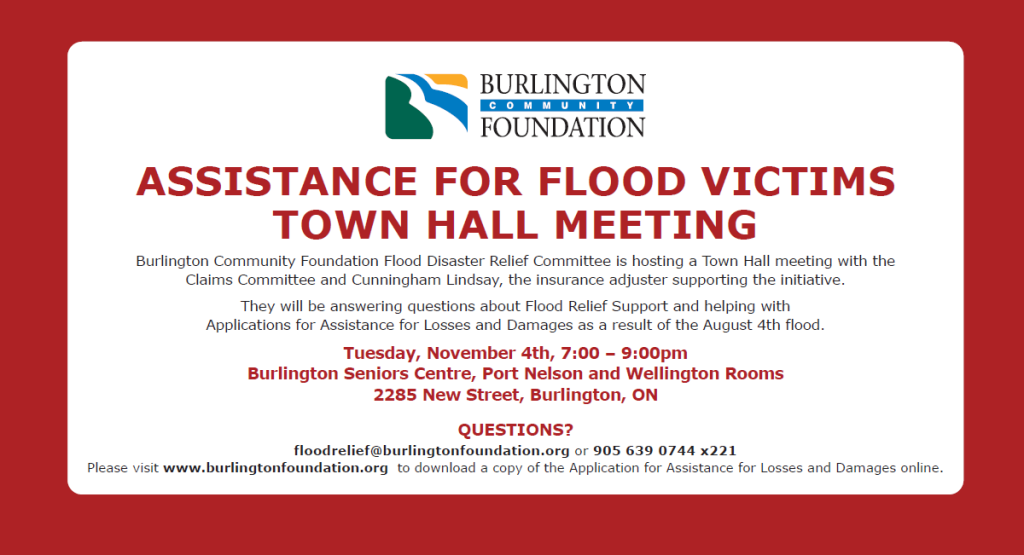
The Burlington Community Foundation (BCF) is holding a Town Hall meeting on Tuesday November 4th to explain the process that is being used to take care of those who need financial help.
To some the forms and the process might be confusing. The BCF will be explaining the process and will also have people on hand to work directly with those who need help,
The BCF believes there are at least more than 100 people who need and are entitled to help. It is vital that these people be in touch with the BCF and if at all possible that they attend the Tuesday meeting.
When you read this , please tell at least five other people and ask those five people to tell five other people.
If you were flooded and are either uninsured or under insured please attend the November 4th meeting.
There are people who can help – but they need to be able to talk to you.
The meeting is taking place at the Seniors’ Centre on New Street between 7:00 and 9:00 pm.

 By Staff By Staff
November 1, 2014
BURLINGTON, ON.
The Ontario Association of Chiefs of Police (OACP) hold an Annual Crime Prevention Week campaign. This year, the Halton Regional Police Service is focusing on the increasing issue of Distracted Driving.
One only has to drive around to see the number of distracted drivers either talking on their cell phones or with their heads down, texting in their laps.
In 2013, distracted driving caused more deaths than impaired driving in Ontario. It is also a direct cause of 30-50 percent of collisions, yet people continue to ignore the warnings and choose to drive distracted putting not only their lives at risk but everyone around them.
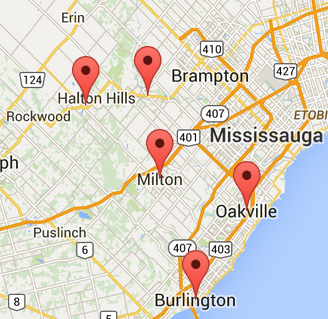 The markers on the map will show how many people in each community actually signed the pledge on line – were you one of them? Halton Regional Police issued a total of 6,857 distracted driving tickets in 2013. From January through to October 2014, 6,916 tickets have been issued. Drivers are not getting the point.
Our “Thumbs Up Against Distracted Driving” campaign is an educational initiative that serves to create awareness and encourage dialogue between drivers of all ages in hopes of getting people to take the pledge to put the phone down.
High School Liaison officers will be engaging youths in high schools around the Region to break the habit and put their phones down while driving. A thumb band with the reminder “W82TXT” will be handed out to be worn.
The Regional police are going close to all out on this educational initiative and have set up a section of their web site where people can “take the pledge” not to text while driving.
They have created a map showing how many people in each community within the Region have taken the pledge.
 “We encourage people to go to our website and take the pledge. A friendly challenge between municipalities can be followed on the map. Take the HRPS Pledge and watch the numbers in your municipality grow” suggest the police. Click here to take that pledge. “We encourage people to go to our website and take the pledge. A friendly challenge between municipalities can be followed on the map. Take the HRPS Pledge and watch the numbers in your municipality grow” suggest the police. Click here to take that pledge.
Let’s all help make Canada’s, more specifically, Halton’s roads the safest in the world!
Follow @HaltonPolice on Twitter and join the conversation using the following hashtags: #HRPSPledge and #W82TXT.

 By Pepper Parr By Pepper Parr
October 31, 2014
BURLINGTON, ON.
Burlington, through its Public Art Program, has selected artist Simon Frank to install a public art piece at Mountainside Recreation Centre.
Frank was chosen by a community jury through the Public Art Program after the call for proposals produced a list of 32 submissions. The list was shortened to four artists: Karl Ciesluk from Ottawa, Ont., Simon Frank from Hamilton, Ont., Andrew Owen from Toronto, Ont. and Teresa Seaton from Burlington, Ont.
 werc “Frank has a well-established, contemporary art practice that examines the relationship between people and the natural environment,” said the jury’s statement. “He was able to clearly communicate his understanding of the community that the public art will exist in.”
Frank, a poet, artist and rustic furniture-maker, will use community input, the design of Mountainside and the natural area to create his final plan. He will be on site this fall to explore the area and consult with the community as he begins the $25,000 project. Dates, times and locations for public input will be announced.
The public art piece will complement the Mountainside Recreation Centre revitalization project.
Simon Frank was born in 1968 in Glasgow, Scotland, but grew up in Dundas, Ont. Over the past 18 years, Frank has participated in solo and group exhibitions across Ontario, as well as exhibiting in special projects in Saskatoon, Italy and South Korea. He has received grants from both the Canada Council for the Arts and the Ontario Arts Council.
 “Island” at the Dominic Agostino Centre Frank has installed two permanent, public art works in Hamilton: “Island” at the Dominic Agostino Centre (2003) and “Concrete Poetry” on Locke Street (2011). He has also been a finalist in public art competitions in Waterloo and Surrey BC. Frank is a member of the Hamilton-based collective TH&B, which has produced site-specific projects in Hamilton, Kingston, Buffalo and New York.
Over the past eighteen years, Frank has participated in solo and group exhibitions across Ontario, as well as exhibiting in special projects in Saskatoon, Italy and South Korea. He has received grants from both the Canada Council for the Arts and the Ontario Arts Council. Selected exhibitions and offsite projects include: “Take on Me”, Luminato Festival, Toronto (2014); “Romancing the Anthropocene”, Nuit Blanche, Toronto (2013); “View (from the escarpment)”, Art Gallery of Hamilton (2012); “The Tree Project”, McMichael Gallery, Kleinburg (2012); “Terra Incognito”, Rodman Hall, St Catharines (2009); “Earth Art”, Royal Botanical Gardens, Hamilton (2008); “Sketch for New Forest”, The Koffler Gallery,  Toronto (2007); “Wild Wood” Haliburton Forest Preserve, Haliburton (2007); “The Forest for the Trees” Galleria di Arte Contemporanea, La Spezia, Italy (2007); “Ice Follies 2006”, WKP Kennedy Gallery, North Bay (2006); “Gold Leaf” (performance), Art Gallery of Ontario (2005); “Shorelines”, MacLaren Art Centre, Barrie (2005); “Exchange-Changing the Landscape”, The Tree Museum (2004); “SPASM II”, Saskatoon (2004); “The Geumgang Nature Art Project”, Korea (2002); “CAFKA/Power to the People”, Kitchener (2002); “Zone 6B: Art in the Environment”, Hamilton (2000). Frank is also a member of the Hamilton-based collective TH&B, which has produced site-specific projects in Hamilton, Kingston, Toronto, Banff, Buffalo and New York. Toronto (2007); “Wild Wood” Haliburton Forest Preserve, Haliburton (2007); “The Forest for the Trees” Galleria di Arte Contemporanea, La Spezia, Italy (2007); “Ice Follies 2006”, WKP Kennedy Gallery, North Bay (2006); “Gold Leaf” (performance), Art Gallery of Ontario (2005); “Shorelines”, MacLaren Art Centre, Barrie (2005); “Exchange-Changing the Landscape”, The Tree Museum (2004); “SPASM II”, Saskatoon (2004); “The Geumgang Nature Art Project”, Korea (2002); “CAFKA/Power to the People”, Kitchener (2002); “Zone 6B: Art in the Environment”, Hamilton (2000). Frank is also a member of the Hamilton-based collective TH&B, which has produced site-specific projects in Hamilton, Kingston, Toronto, Banff, Buffalo and New York.
The mission of the City of Burlington’s Public Art Program is to enhance the quality of life in Burlington through art. The program strives to bring artwork by both established and emerging artists throughout Burlington.

 By Lana Kamarić By Lana Kamarić
October 28, 2014
BURLINGTON, ON.
Thursday evening, at the Edy Roy Glass Gallery on Spring Garden Road, just in behind the Royal Botanical Gardens, True Visage, a specialty show for Devil’s Night will take place.
True Visage will be featuring a new body of work from Salt, a glass artist from Austin Texas, which will include his glass pipe work as well as a series of masks – appropriate for the occasion.
In these new pieces, Salt examines the masks we wear through the faces we put on for the world. He plays with the concept in both a literal and figurative sense, postulating that while we do not necessarily cover our faces with a latex shield we do tend to smile even when we are not happy.
 Latex masks with removable glass eyeballs are part of the True Visage exhibit at the Edy Roy Faller this Thursday Salt has collaborated with special effects artist Kim Zii to create latex masks with removable glass eyeballs. Zii is also an experienced glass and make-up artist from Philadelphia.
In addition to the masks Salt will also be displaying a series of glass pipes. As a functional piece he raises the question of whether the pipe is disguised as art or if the art is disguised as a pipe. Salt describes the pipe as a product of its environment – much like the faces we wear for the world.
Salt’s work often resembles monsters and strange creatures. True Visage was created specifically for this Halloween geared show. Edy Roy Glass Gallery strives to promote original and unique pieces. Creative director, Kyle Brooke, focuses on pieces from “artists that have something to say and have a voice.”
While the gallery does display traditional soft glass work, they also work to showcase the contemporary glass movement that involves borosilicate glass work, which tends to be more functional. Brooke provided some insight into this movement, specifically that of glass pipe art. She describes this art form as a subculture much like graffiti and tattoo art.
 Kim Zit’s glass pipes are a subculture much like graffiti and tattoo art Brooke also mentioned how this art form has become its own industry and gathered many followers. Artists do events all over the world and are often regarded as “rockstars” in their field. Brooke discovered this movement in the US and is working to bring more of it to Canadian audiences.
The opening night will be this Thursday October 30th. A private showing will take place for the sponsors on the opening night, however the show will be open to the public from 6 – 10pm.
The Edy Roy Glass Gallery exhibits are very popular and draw a lot of people for their specialty shows. Line ups are not uncommon – it is expected to be quite the event. In the spirit of Halloween the event will be a masquerade, so bring your mask.
 Lana Kamarić is a contemporary surrealist artist and a self-taught painter. Born in Sarajevo, Bosnia Lana arrived in Canada at the age of five. After moving to Burlington she attended Robert Bateman High school and graduated from York University with a degree in Art History. Lana has worked with the Museums of Burlington, the Art Gallery of Burlington and is currently working as a full-time artist. Lana was a participant in Cirque, the 2014 No Vacancy installation event in the Village Square. Her last show was Art in the Workplace at McMaster Innovation Park. Lana Kamarić is a contemporary surrealist artist and a self-taught painter. Born in Sarajevo, Bosnia Lana arrived in Canada at the age of five. After moving to Burlington she attended Robert Bateman High school and graduated from York University with a degree in Art History. Lana has worked with the Museums of Burlington, the Art Gallery of Burlington and is currently working as a full-time artist. Lana was a participant in Cirque, the 2014 No Vacancy installation event in the Village Square. Her last show was Art in the Workplace at McMaster Innovation Park.

 By James Smith By James Smith
October 24, 2014
BURLINGTON, ON
The Red Cross identified more than 200 homes that were severely damaged. The city asked the Burlington Community Foundation to take on the task of raising funds from within the community and handle the processing of flood relief applications. Aid is available only to the people who had no insurance or were under insured. Many of those who did not have insurance were unable to buy insurance because of past flood claims. To date there are something in the order of 40 applications received by the Community Foundation. James Smith knows of at least five people who do not understand the forms and believes there are others. He wants the city to lend a hand.
Open Letter
Mr. Patrick Moyle, Interim City Manager, The City of Burlington
As you may know I am a candidate for Burlington’s Ward 5 in Monday’s municipal election but this is not a political message. Rather this is an urgent request to the civic administration, on behalf of the many people who have had their lives and property damaged by the storm of August 4th.
The City of Burlington needs to help, advise and offer direction on the process of how to make claim through the Ontario Disaster Relief Plan (ODRAP) that the Burlington Community Foundation (BCF) is managing.
The process is almost unknown to a large number of residents who had their homes damaged by the events of August 4th. The form, as developed by the BCF may be thorough, but is only readily available from the BCF’s website, and many seniors do not readily have access to the internet, the form is also 13 pages long and fairly complex. Add to these hurdles, the process is not well understood by many.
Here’s what thousands of residents of Burlington’s South East need, and need right away:
Train a handful of City Staff, (15-25) from any department, and familiarized these City Staff members with the ODRAP process, the forms produced by the Burlington Community Foundation (BCF) and how to fill out the forms and how to deal with questions from those who will apply.
Organize staff into teams to hold small scale meetings in a large number of locations across the South East of the City, in City facilities but also in non traditional locations such as: Places of Worship, Stores, Restaurants, Work Places and even private residences.
Use whatever means possible to let those who’ve been damaged know about when and where meeting will take place. Do not simply rely on Advertising in local media and city websites and social media. Old school methods should include flyers, door-to door canvas, mobile signs and posters on utility poles.
Organize meetings that are part information and part working meetings with greeters directing the public to either information or intake workers.
These meetings need to be working meetings that focus on having these members of city staff to assist residents fill out & and accept forms and documentation, and follow-up with those who apply or who need further information.
As a city, I feel we owe this kind of effort, at the very least, to those in our community who have been damaged by the events of August 4th.
I trust you agree with me and will find the resources to accomplish this without delay or direction from council because; it is the right thing to do.

 By Staff By Staff
October 23, 2014
BURLINGTON, ON.
Burlington Transit held a community meeting on proposed changes to Route 6 at Tansley Woods Community Centre Tuesday evening. It was not a smash hit.
Two seasoned observers, one, the best mind on transit matters the city has and Jennifer Hlusko, a current school board trustee running for the ward six council seat who always has a command of the numbers on anything she talks about, comment on the event.
Hlusko had this to say:
“I attended the City’s presentation last night about the options that City Staff are considering to response to the complaints received from Headon Forest Drive residents. I had attended the Council meetings last May to listen to the residents’ delegations.
 Jennifer Hlusko I was astounded by what I witnessed last night. The City hired a Consultant to handle this transit complaint. Dennis Fletcher, of Steer Davies Gleave, told the audience that over the past few months he has read every email and complaint received from the public. Mr. Fletcher said he was “brought in by the City to be an objective third party”.
In addition to the Consultant, I counted 8 City staff members, 23 residents, 3 Ward 6 Councillor candidates and 1 Ward 6 trustee candidate. Significantly, in the room was Mike Spicer, Director of Burlington Transit. John Duncan, Burlington Transit, was quick to tell me staff weren’t being paid overtime. That wasn’t my objection (although I expect they’ll be given lieu time).
My objection was that the City once again hired a Consultant to handle a file that staff should handle. There was nothing that Mr. Fletcher provided last night that staff couldn’t have handled themselves. Halton District School Board staff frequently lead very contentious public meetings dealing with boundary reviews and school closures.
Mr. Fletcher presented the 3 options (that were already available online), took questions from the audience then invited them to review the charts up close. Neither he nor staff would provide ridership data. To me, that is the crux of the matter. Mr. Fletcher did take the opportunity to diss the school board for downloading the problem of transporting Notre Dame Catholic SS students onto the City of Burlington. How many students ride the bus? If the route is changed to Option #1, has the administration at Notre Dame been asked how that would likely impact ridership? Does the City project that changing to Option #1 will increase ridership by providing direct access to the Supercentre mall, MMRobinson HS, the No Frills plaza, etc.? Can these projections be shared with the public?
Mr. Fletcher said that City Staff will prepare a report that will go to Council in December. If I am elected to be the Ward 6 Councillor, rest assured that I will advocate for data based decisions. Furthermore, that data is shared with the public. I will highlight for the public every time the City considers hiring a Consultant and how much it will cost taxpayers.
I invite residents to attend the repeat performance on Thu Oct 23rd at Tansley Woods. While the notice states the meeting start time is 6pm, the presentation does not begin until 6:30pm.
Here are the three options. Please note they did not include an option along Upland Drive that meets the criteria of providing transit to the Burlington Supercentre mall, but would consider it if the public requested it. Then when an audience member asked if they would consider Deer Run, Mr. Fletcher said, “We are not looking for streets to put a bus on or to take a bus off. We are trying to provide a service to meet GO times.”
The Hlusko comments were published by Hlusko on “blog” she writes almost daily
 Doug Brown and Susan Lewis look over a 1982 copy of the city’s bus schedule. Doug Brown, chair of Bfast a transit advocacy group based in Burlington made the following comments about the meeting.
Residents do not have the right to remove service from transit users. Not wanting a bus or bus stop near your home is not a reasonable request. It is strange that Council has been so receptive to moving bus stops and bus routes away from complaining homeowners, while showing no interest in the hundreds of complaints from bus users who have lost service during the arbitrary changes resulting from the “Interim Plan” of September 2012, and the wholesale route and schedule changes of November 3, 2013. Does Council have a bias against transit using citizens?
Transit routes should be determined by user needs and through a long-term, comprehensive transit plan. The November 03, 2013 changes did not meet these criteria.
Any changes made to Route 6 should be based on user needs and views – not on unreasonable requests from non-users to remove service.
Further transit changes should be based on a long-term well researched transit plan. Since the 2010-11 Transit Master Plan was aborted by the City in January 2011, there has been no long-term transit plan. The current Transportation Master Plan would have been a good opportunity to develop a long-term integrated transportation plan that would have included a balanced strategy for moving people via car, transit, cycling, or on foot. This opportunity is being missed.
In an interview the day after the meeting Doug Brown said: “To put it mildly, not a good public meeting.
The meeting had a number of non-transit using residents of lower Headon Forest and Pine Meadow. There were some transit users there, even though the Tansley Woods meeting site has hourly bus service – not great accessibility if you can’t drive there.
The meeting began with a talk by a paid facilitator who spent 25 minutes describing the three options that Burlington Transit has developed for the north end of Route 6.
I was the first person to speak from the audience, but was stopped half a minute into my statement by the facilitator and Mike Spicer on the grounds that only comments on the posted three options were allowed. Before being cut-off, I was interrupted several times by some rude residents with comments such as “have you heard the buses.”
I did at least get my first point out that no resident had the right to prevent transit from using their street, and that streets were public right of ways.
Empty buses was the theme of most of the non-transit using residents. Four transit users did speak, but it was very apparent that the NIMBY-minded residents had created a very anti-transit mood. The first transit user to speak felt compelled to apologize for his comments since they contradicted the presented empty bus claims.
Nonetheless, there were several good observations from the few transit users there. One lady recommended going back to the old #6 route which serviced Burlington Mall as well as the Fortinos plaza.
Anyway, back to my comments which I was prevented from delivering. My first point was that residents did not have the right to remove bus stops or buses from their streets. The second issue is that Transit routes should be determined by user needs and through a long-term, comprehensive transit plan. Good transit planning cannot be achieved by the ad hoc and time constrained options presented at the meeting.
My third point was that any changes made to Route 6 should be based on user needs and views – not on unreasonable requests from non-users to remove service. This is a key issue as staff and council seem to pay much more attention to non-transit users views than the needs of transit users.
And my fourth point was that further transit changes should be based on a long-term well researched transit plan. I noted that the City’s 2014 Capital Budget document shows no funding allocation for a transit plan until 2018 meaning that for the next 4 years, any transit measures will be ad hoc and not based on a sound long-term plan.
The three options presented by the City were far too limited as they ignored the central issue of lack of funding and poor service levels (one- hour headways on the north east routes). Staff has apparently ruled out any alternative that would cost more money – which rules out many potential options for better service.
A final comment – I have been attending many public meetings over a very long time. Last night was the first time I was stopped from speaking.

 By Pepper Parr By Pepper Parr
October 22, 2014
BURLINGTON, ON
A second citizens group has been set up to deal with the flooding problems that resulted from that August 4th flood. This group, known as Halton Residents Against Sewage Backup and Flooding (HRASBF) has been a little more active at the social media level and expects at some point that it will join forces with Burlington Sewer Back-up Victims Coalition (BSBVC)
Differentiating between the two groups can be confusing so we will call them the “Victims” and the “Advocates”.
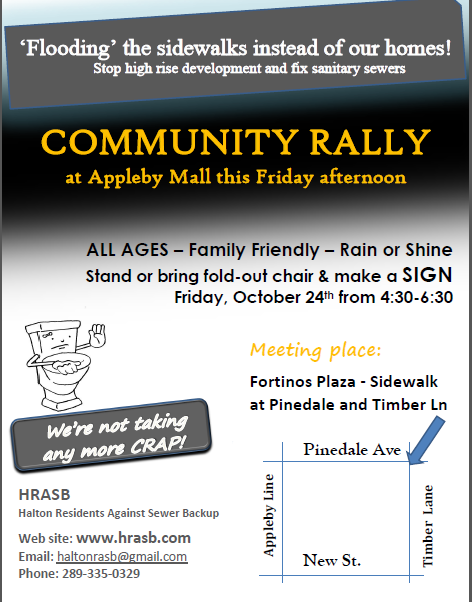 The “advocates” once met with ward five council member Paul Sharman at what he wanted to call a private meeting held in a church. It was clear at that meeting that the residents had more information than the council member who admitted that his problem was getting information out of the Regional level of government. The “advocates” once met with ward five council member Paul Sharman at what he wanted to call a private meeting held in a church. It was clear at that meeting that the residents had more information than the council member who admitted that his problem was getting information out of the Regional level of government.
The “advocates have called a public meeting for Friday, October 24th – from 4:30 to 6:30 at Fortino’s Plaza
Sharman, to his credit, got the Region to do a study of flooding in July – before the August storm because there had been persistent flooding in his ward.
The flooding issue has come close to defining Sharman’s re-election campaign.
Jack Dennison, who is running for re-election in ward four claimed he had inspected more than 1000 basements.
Peter Rusin, who is running for the office of Mayor said Mayor Goldring’s absence from last night’s meeting was less than encouraging. If I was elected Mayor, it would not be resident groups requesting meetings or pressuring for solutions. I would set up a series of workshops involving Regional Engineers, City Engineers, the Conservation Authority and possibly include representatives from both the federal government and the insurance industry.
“My goal” said Rusin, ” would be to fast track and prioritize future remediation measures such as capital projects for new storm water ponds, greater erosion control, flow capacity consideration and emergency plan measures.”
This is a difficult time for those involved in the politics of wards four and five – there are some terribly painful human tragedies going on in hundreds of households but there isn’t all that much a candidate can actually do.
The need for the flood victims is financial but unless a home owner was uninsured or under insured they will not benefit from the funds being raised by citizens through the Burlington Community Foundation.
The frustration in the community comes through in the email chatter – some of which we set out below.
The email chatter:
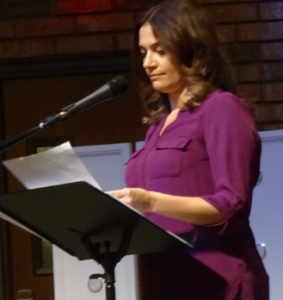 Christina Thorpe, spokesperson for the Halton Residents Against Sewage Backup and Flooding (HRASBF) speaking at a community meeting at Glad Tidings church on Guelph Line. From: Harnum, Jim [mailto:Jim.Harnum@halton.ca]
Sent: October 21, 2014 9:25 AM
To: ‘Christina Thorpe’
Subject: RE: Flood
Hi Christina,
Sorry for the delay in responding, I was out at an offsite meeting yesterday. The magnitude of this storm was unprecedented in Halton Region, in the past we had only experienced 20 to 30 flood claims per year vs 3000 in one week. We did not have this pamphlet prepared until after we received feedback from the community, that more information was required.
With respect to your second point, please accept my apologies for the impression that I was downplaying the impact or magnitude. I was merely stating the facts concerning the dilution factor of the water in basements. I recognize that this has been a terrible event for thousands of individuals and by no means was I downplaying the impacts. A storm of this magnitude would have overwhelmed any system in Canada as sanitary sewers are not designed to handle rain water, especially at these magnitudes.
Jim Harnum, CET, MBA Commissioner, Public Works
Thorpe responds:
From: Christina Thorpe [mailto:christinaathorpe@gmail.com]
Sent: Sunday, October 19, 2014 10:16 PM
To: Harnum, Jim
Subject: Re: Flood
Hello Jim,
With all due respect, hard copies should have been mailed or hand delivered to each resident within a few days of the backups/flooding with the ex-gratia grants. Does the region realize how many residents were blindsided by restoration companies and contractors? These restoration companies charged exorbitant fees and did not do proper clean up and residents were none the wiser, and according to the Ontario Environment Safety Network (OESN), every home they visited in Burlington was inadequately cleaned and tested.
I, personally, don’t appreciate your downplay of the situation. My children have unexplained rashes on their legs and face. I have seen exhaustion in elderly folks and those who are not well. The region should be holding information sessions for residents in this aftermath in conjunction with the public health department.
Christina
Jim gets back to Christina:
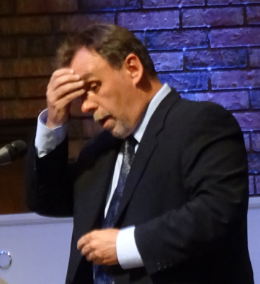 Jeff Brooks, candidate for the ward three council seat speaks at the Glad Tidings meeting. On Sun, Oct 19, 2014 at 9:16 PM, Harnum, Jim <Jim.Harnum@halton.ca> wrote:
Hi Christina,
Residents can get hard copies at Region offices or they can call 311 and we will mail them out one. During the Aug 4 flood, the ratio of rainwater to sewage was very high, in other words the majority of water in basements was rainwater mixed with a very small volume of sewage. Therefore the threat to health was very small. As far as fecal mater in weeping tiles, most plumbing would be thoroughly flushed after another heavy rainfall, which we have had several since the flood. If a homeowner did still have a concern they could enlist the services of a plumber to send a camera into weeping tiles to review the condition. I hope this helps and answers your questions.
Jim Harnum, CET, MBA, Commissioner of Public Works
Christina responds again:
From: Christina Thorpe
Sent: Sunday, October 19, 2014 8:48 PM
To: Harnum, Jim
Subject: Re: Flood
Hi Jim,
Where can the hard copies of the guide be found? Did elderly home owners who do not have access to computers, those who lost their computers or those who no longer drive receive copies from the region?
Also, you have not answered the question of fecal matter stuck in the weeping tile and drains. How is the region responding to this?
Christina Thorpe
On 2014-10-19, at 6:17 PM, Harnum, Jim wrote:
Derek Johnston joins the chatter and gets a response:
Hello Mr. Johnston,
> Thank you for the information, I will review the situation that occurred on Mcraney Avenue in the past to see if there are similarities. As far as the health and wellbeing of homeowners, Halton has also been very proactive in this area. Although we cannot go into residences to review the presence of mold or other contaminants, we have worked closely with our Public Health Department and developed very comprehensive material on our website to help homeowners understand the issues.
We have also developed a very detailed guide titled “A guide to Flooding Prevention and Recovery”. This guide has all of the information that homeowners in Halton would need to help protect themselves from future flooding events and how to ensure that their homes are safe if they do experience flooding. The website link is below and the guide is located here as well. The guide is also produced in hardcopy for those who do not have access to a computer.
https://www.halton.ca/cms/One.aspx?portalId=8310&pageId=114218
Jim Harnum, CET, MBA, > Commissioner, Public Works
> —–Original Message—–
Johnston sends a polite response:
From: Derek Johnston [mailto:derek@soundmaskcanada.com]
> Sent: Sunday, October 19, 2014 4:44 PM
> To: Harnum, Jim
> Cc: Paul Sharman; Phil Cavanagh; Christina Thorpe; Bob Vrenjak; Carr, Gary; matt johnston; Linda Johnston; peterrusin@royallepage.ca
> Subject: Flood
>
> Thank you Jim
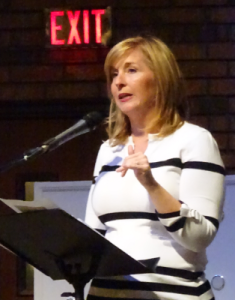 Nicole Dunn, part of the (HRASBF) talked about the health issues related to the flooding. She thinks they are serious and being overlooked by the Regional bureaucrats. > We are not done yet but i am impressed by the quality of your response and by the fact that it came out so promptly on a Sunday afternoon,.
> You might want to take a look at what happened on Mcraney avenue 20 years back it was remarkably similar to the Tuck Creek overflow . The City of Oakville picked up the tab for all repairs to a large number of flooded homes My serious concern at this point is the most vulnerable flood damaged people. There are a lot of elderly people in our neighbourhood. I am concerned that sewage damage which is not immeadiately apparent might be missed leaving a festering disease and mold Infested condition with possible deadly ramifications. Is there any way we can make sure that all houses are safe. Please be advised i am aware of several homes where damage to the piping did not become apparent until weeks after the flood , Sewer gas smell and backed up sewage pipes were discovered. i want to be sure that all flood victims are safe from disease and illness.
>
> Best Regards Derek Johnston
Jim Harnum responds to Johnston again:
On 2014-10-19, at 11:16 AM, Harnum, Jim wrote:
>
Hello Mr. Johnston,
Thank you for your e-mail, I understand your concerns and assure you that the Region is taking this issue seriously and we have been very active in assisting residents and looking for short and long term solutions.
The Region has received over 6000 flood related inquiries since August 4th. All calls received by 311 (Access Halton) by phone or e-mail that require follow up are logged and tracked. Staff has responded to calls received by connecting directly with residents or by leaving a message with relevant information. We have encouraged all residents impacted by flooding to contact 311. This message was communicated to over 30,000 Burlington residents using the Community Emergency Notification System as well as by the Red Cross when they visited 10,979 homes at the request of the City and the Region following the flooding. There has also been communication through the media and social media.
I would also like to provide you the following additional information highlighting the Region’s response to the August 4th storm.
Over 3000 homes have been visited by Regional staff and almost $2 million in ex-gratia grants provided to assist residents. The Region also initiated a special program for residents in high priority areas where homes have been impacted by repeat flooding, covering 100% of the costs of basement flooding prevention measures. It is expected this program will cost an additional $1 million.
The regular Basement Flooding Prevention Subsidy program is available to all residents covering up to 50% of the cost to install basement flooding prevention measures. The demand for this program increased significantly after the August 4th storm. It is estimated that the Basement Flooding Prevention Subsidy program will cost the Region over $1 million.
Since the August 4th storm, the Region has also provided enhanced waste collection services in Burlington to assist residents clean up following the flooding. The cost of the enhanced services is expected to cost approximately $500,000.
Halton Region has supported the City’s request for Provincial assistance through the Ontario Disaster Relief Assistance Program (ODRAP) and the fundraising efforts by the Burlington Community Foundation to provide financial assistance to residents impacted by the flood.
Halton Region has not previously experienced a storm with the intensity of the August 4th storm. It is clear that weather patterns throughout the world have changed. The City and the Region have initiated reviews of the storm water and sanitary sewer systems to identify actions that can be taken to reduce the risk of future flooding given the new realities of climate change. The review will consider changes in infrastructure, programs to disconnect private downspouts and updates to the Basement Flooding Prevention Subsidy program. Public Information Centres will be scheduled to update residents as the study proceeds.
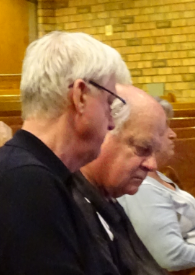 Councillors Sharman and Taylor attended the community meeting but neither was asked to speak. Shaman’s ward was seriously damaged by the flooding. One would think the residents would want to hear from him. Taylor who has been around longer than any other council member knows more about how the Region works than anyone else on Council could have added some very useful information. Residents with questions or concerns related to basement flooding are encouraged to call 311 or visit the Region’s website at Halton.ca/flood. In addition, the Region has recently published a “Guide to Flooding Prevention & Recovery” which is available online at Halton.ca/flood, or by calling 311 for a print copy.
Jim Harnum, CET, MBA, Commissioner, Public Works
—–Original Message—–
Regional Chair Gary Carr jumps in:
From: Carr, Gary
Sent: Saturday, October 18, 2014 5:30 PM
To: Derek Johnston; Harnum, Jim; MacCaskill, Jane
Subject: Re:
Thank you
Jim will give you a detailed update
Regards
Gary
On Oct 18, 2014, at 5:28 PM, Derek Johnston <derek@soundmaskcanada.com> wrote:
You quick response on a Saturday afternoon is noted and appreciated.
Thank you Derek Johnston

 By Halton Residents Against Sewage Backup and Flooding By Halton Residents Against Sewage Backup and Flooding
October 22, 2014
BURLINGTON, ON.
Dear Mr. Carr:
Eleven weeks have passed since the Aug. 4th flood and majority of Burlington residents are still wondering what happened on that day when tens of thousands of liters of raw sewage and overflow from creeks entered into their homes, causing millions of dollars in damages and a plethora of issues from insurance battles to health risks to stolen repair deposits.
Below are questions and concerns from the residents of Burlington which HRASB compiled over the last several weeks. Health and Safety.
As you are well aware, there is a sizeable elderly population in Burlington and many live alone or with their domestic partner of many years. Several of these elderly folks did not have their homes cleaned out within the recommended time frame for a sewage backup. Also, the Ontario Environmental and Safety Network (OESN) mentions that fecal matter trapped in weeping tile and drains can release methane gas, not to mention when affected areas of the home are not adequately cleaned and tested (which OESN found in every case), then bacteria and viruses could grow and overt health effects could occur to otherwise healthy individuals. Why not bring in the Public Health Department to inspect homes?
Follow-up by the Region
We are aware of at least two residents who reported sewage backup flooding to the Region but were not contacted. Of those residents who were contacted by the Region, some reported missed appointments by Regional staff which resulted in delayed reconstruction or pressure from insurance companies for installation of the backwater valve system. Many residents still have storage pods in their driveways.
Burlington Flood Relief Foundation
Why did the representatives from the Burlington Flood Relief Foundation decline two invitations to attend sewer backup meetings thereby missing opportunities to connect with 350+ residents who were directly affected by sewage backup?
Wastewater Capital
Wastewater capital investment for new development in Oakville is 368.4 million dollars from 2012-2016 and a mere 6 million dollars for Burlington in the same time frame. Residents understand that Oakville is experiencing growth; however, Burlington east wastewater pumping stations were identified as ‘poor condition’ and the ‘highest priority’ (in Halton) as per RV Anderson and Associates engineering study provided in 2012 to the Halton Region. Why so little capital investment in Burlington when there are known issues?
Backwater Valve and Subsidy Decisions
Some residents will receive full coverage for the installation of back water valve and sump pump system while others will not. What exactly are the criteria for full subsidy and who oversees the program?
Construction by Year-End
If the Region is waiting for the results of a flood report expected in July of 2015, why are there plans to begin construction by year- end in some neighbourhoods? What knowledge does the Region have currently regarding the sanitary sewer infrastructure which has not been made public?
New Development
Residents feel that developers have ‘no business’ proposing high-rise apartments downtown, at Appleby Mall, or any other area of Burlington significantly impacted by sewer backup/flooding. Until the major infrastructure problems are identified, made public, and ultimately fixed, there will be significant push back by the residents.
We look forward to your response.
Sincerely,
Members of the HRASB
www.hrasb.com

 By Pepper Parr By Pepper Parr
October 21, 2014
BURLINGTON, ON.
The ward covers the eastern half of rural Burlington and tracts that run from Hwy 407 down to Upper Middle Road and includes the well-established communities of Millcroft and Headon. The newly created Alton community brought much more diversity into the ward and small pockets of development along the 407.
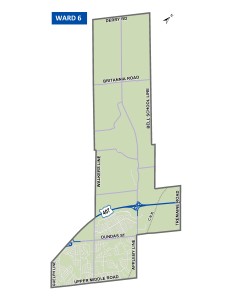 There isn’t much in the way of industry in the ward; The Hanson Brick Works operates at Dundas Street, there are a lot of commercial operations but all are small in nature. Emery Developments decided to build two five storey towers attached to each other with a two storey atrium at Palladium Way. The intention of the developer is to build on speculation. They were confident enough that the market was there for their offering and expected some occupancy in late 2015. There isn’t much in the way of industry in the ward; The Hanson Brick Works operates at Dundas Street, there are a lot of commercial operations but all are small in nature. Emery Developments decided to build two five storey towers attached to each other with a two storey atrium at Palladium Way. The intention of the developer is to build on speculation. They were confident enough that the market was there for their offering and expected some occupancy in late 2015.
 Staff recommended a Mixed Use plan but indicated that if council selects the all Employment option, staff are able to support this, but cannot support an All Residential option The Krpan Group project at Dundas and Tremaine is stuck at the OMB – residents have heard very little about this project which has a number of features and approaches to development that are worth paying attention to – but they don’t appear to have any traction in the mind of the Council member for the ward
There was to be a new court house for provincial offences in the war but that disappeared just as fast as it appeared when local opposition spring up without the ward Councillor knowing all that much about the plans.
There isn’t a ward council – that kind of citizen involvement doesn’t sit all that well with the Council member; it would mean sharing the power a member of Council has and attracting meaningful input from the community.
Millcroft and Headon are strong communities that with few problems. Snow removal, road repairs – the usual municipal services are what they ask for – just keep our taxes down.
Dundas Street is due for a very significant upgrade and a widening that will make it a much different road than it is today – it isn’t clear yet what kind of development it will attract. The Region expects to run busses along that road as part of an inter-city transit offering at some point. That is years away but the work needed to create an additional east west road has been made at the Regional level – so Dundas get upgraded
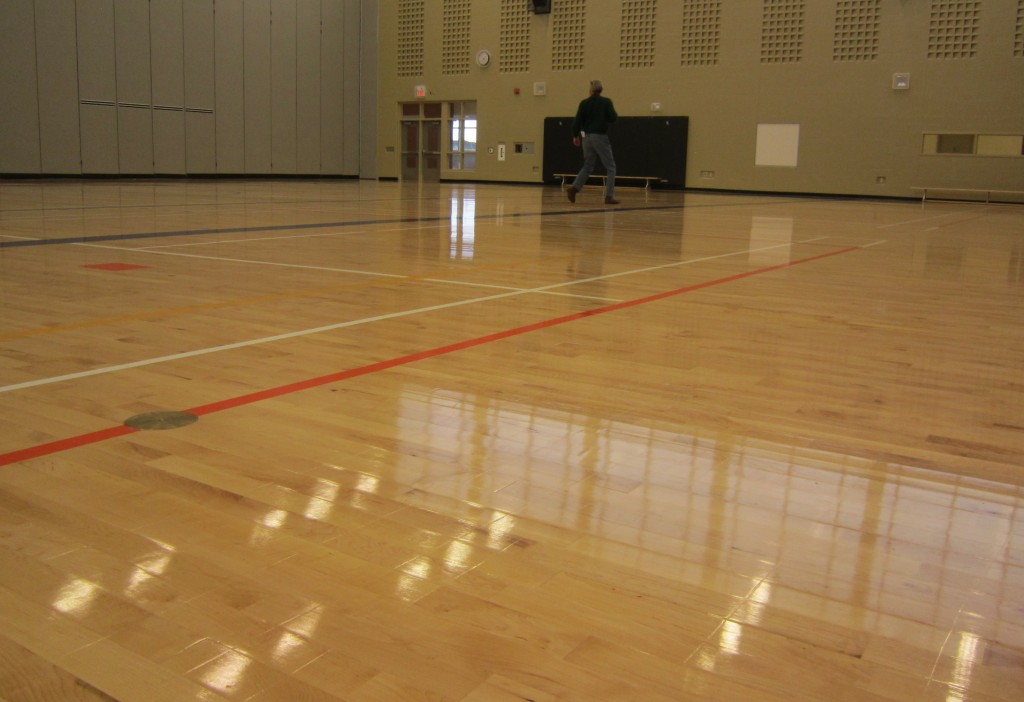 Part of the massive gym set up in the Haber Recreation Centre The opening of the Hayden Recreational Centre, the Frank Hayden High School and a new branch of the library system created a community that pulled itself together very quickly and managed to produce three South Asian candidates for the ward seat.
Transit is not yet a significant issue – most of the seniors are at a point in their lives where they still drive their cars. The demographic of that cohort will shift significantly in the next ten years and the need for more in the way of community services geared to seniors and transit service that will let them get to different places in the city will become evident.
 The Air Park is both a problem and a significant opportunity but at this point any ideas that are being discussed come from the mind of Vince Rossi who has yet to provide anything in the way of a business. Rossi has been able to get away with dumping land fill without the required permits because no one, including Blair Lancaster, paid much attention – they bought the argument that the air park was federally regulated and no one asked any questions. The Air Park is both a problem and a significant opportunity but at this point any ideas that are being discussed come from the mind of Vince Rossi who has yet to provide anything in the way of a business. Rossi has been able to get away with dumping land fill without the required permits because no one, including Blair Lancaster, paid much attention – they bought the argument that the air park was federally regulated and no one asked any questions.
There is an opportunity to do something with the 200 acre property that fits in with an Air Park and the rural setting – no one has come up with anything yet. Not the Economic Development Corporation, not the Region, not the city – not even the people who live in the eastern half of rural Burlington.
Background links:
The ward Councillor: an assessment.

 Letter to the Editor Letter to the Editor
By Geoff Brock
October 20, 2014
BURLINGTON, ON.
A point of clarification. Peter Rusin never said a highway through Burlington was inevitable. He did say a new highway was inevitable and that if Burlington didn’t get proactive with the province and make sure they were at the table where the decisions are going to be made there could be a highway through Burlington.
I’m want to respond to the discussion I’ve seen in the news over the past weekend about a new Niagara Highway coming to Burlington.
I’m very disappointed to see that Peter Rusin, one of the candidates for Mayor in Burlington, is supporting a new Highway through Burlington because he thinks that will end traffic congestion and drive growth
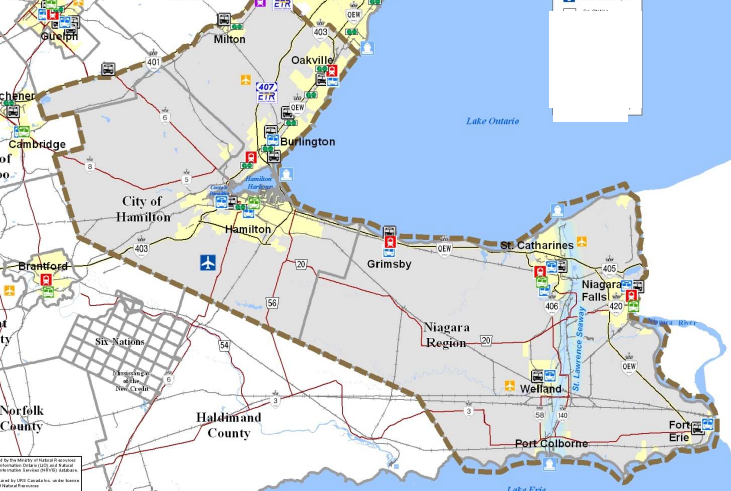 Mr. Rusin’s position ignores the 10+ year study process that was completed by the Provincial Ministry of Transportation in 2013. This study involved multiple municipalities, dozens of Public consultation meetings, and over $10 million in consulting work and transportation planning. The conclusion was that a New Niagara highway corridor is not needed in Burlington. The Stop the Escarpment Highway Coalition was an active participant in this process, along with the City of Burlington and the Halton Region. The conclusion that was reached is a great example of local community groups working with local governments. I don’t know what facts Mr. Rusin is working with other than his own personal opinion. Mr. Rusin’s position ignores the 10+ year study process that was completed by the Provincial Ministry of Transportation in 2013. This study involved multiple municipalities, dozens of Public consultation meetings, and over $10 million in consulting work and transportation planning. The conclusion was that a New Niagara highway corridor is not needed in Burlington. The Stop the Escarpment Highway Coalition was an active participant in this process, along with the City of Burlington and the Halton Region. The conclusion that was reached is a great example of local community groups working with local governments. I don’t know what facts Mr. Rusin is working with other than his own personal opinion.
 Metrolinx completed the Midtown Oakville Mobility Hub Study in October 2012. The study developed a long-term vision for the Oakville GO Station and surrounding lands, building on the substantial amount of planning work the Town of Oakville has already completed – the May 2011 Livable Oakville Official Plan and the June 2008 Draft Midtown Business and Development Plan. It focuses on the redevelopment of publicly-owned lands around the Oakville GO station, the majority of which is owned by Metrolinx. The study also looks at expanding the GO station to ensure it can best accommodate significant growth planned for the area and future Trafalgar Bus Rapid Transit. Mr. Rusin seems unaware of the work Metrolinx is doing in the GTHA to get people out of cars and onto transit. Some things Burlington can do alone, and some need Regional and provincial support. GO train electrification will get us GO train service every 15 minutes all day long, all year. That should get some cars off the road and improve air quality! Expanding the Mobility hub around the Burlington GO station could further help reduce congestion and create an employment centre. You only have to look at the great work done in Oakville to define a vision for the Mobility hub around their GO station. Do look.
Getting people out of cars is tough unless they have a viable alternative. Even the MTO’s long term plans show Burlington only moving from less than 5% of trips on transit, to slightly over 10% in the next 15 years. We need politicians and leaders who will ask “What will it take to get 20% of trips on transit?” The answer is better and more convenient service!
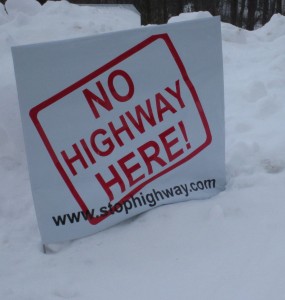 There are lots of great policy ideas that Burlington can do on their own. Local trips on transit are not that convenient. It’s still difficult to get from Burlington to Oakville or Hamilton on transit. Working together with sister municipalities, instead of having standalone transit systems, will support the way citizens are living and working in the community. This idea requires regional thinking and cooperation and the vision a municipal mayor can give to the process. There are lots of great policy ideas that Burlington can do on their own. Local trips on transit are not that convenient. It’s still difficult to get from Burlington to Oakville or Hamilton on transit. Working together with sister municipalities, instead of having standalone transit systems, will support the way citizens are living and working in the community. This idea requires regional thinking and cooperation and the vision a municipal mayor can give to the process.
Study after study shows that $1 spent on transit infrastructure returns many times the benefit of one spent on roads. Cars are going to handle the majority of trips for a long time, but the mix is going to change. We need leaders who understand that long term shift is coming and set the course to keep Burlington one of the most livable cities in Canada.
Geoff Brock is the Co- Chair, Stop the Escarpment Highway Coalition

 By Staff By Staff
October 19, 2014
BURLINGTON, ON.
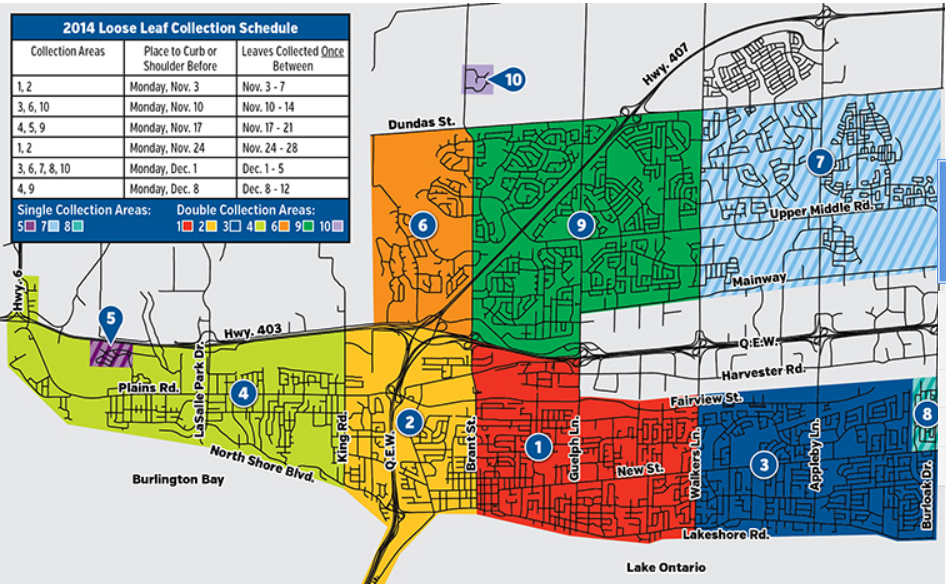 A loose leaf collection service is provided to Burlington residents in the fall, typically beginning the first week in November of each year. This program is in addition to the Yard Waste Collection Service provided by Halton Region Waste Services. A loose leaf collection service is provided to Burlington residents in the fall, typically beginning the first week in November of each year. This program is in addition to the Yard Waste Collection Service provided by Halton Region Waste Services.
Please follow the guidelines below to help ensure a timely and cost-effective leaf collection program:
Please have your loose leaves raked and ready for pickup just prior to the start date for your collection area.
Be mindful of collection dates and avoid raking leaves to the road too early.
Place leaves up to the edge of the curb or roadway (but not on the road) in a loose pile so city equipment can reach them.
Ensure loose leaves are not over catch basins or in the ditches in front of your home .
Please make sure leaves do not contain branches or other debris. Leaves mixed with other waste cannot be collected.
Avoid placing leaves on sidewalks and walkways.
Remove basketball nets, parked vehicles and other obstructions from the road to allow city crews clear access to leaf piles.
Do not place garbage bags, garbage bins, Blue Boxes or GreenCarts on top of loose-leaf piles.
Bagged Leaf and Yard Waste Collection
Halton Region continues to provide collection of bagged leaves and yard waste on the same day as your garbage pick-up. This program is a separate program from Burlington’s Loose Leaf Collection.
Leaf Disposal Alternatives.
• Mulch leaves to use in gardens, flowerbeds, or leave them on your yard.
• Compost leaves in your backyard composter.
• Deliver leaves to the to the Halton Waste Management Site in paper bags or in bulk for composting

 By Pepper Parr, Publisher, Burlington Gazette By Pepper Parr, Publisher, Burlington Gazette
October 19th, 2014
BURLINGTON, ON.
Early next week all of the homes south of Dundas in Burlington will see a small flyer in their mail boxes. It will be the first piece of direct promotion the Gazette has done since its inception four years ago.
The flyer announces the posting of real time election results on the front page of the Gazette on October 27th just as soon as the polls close.
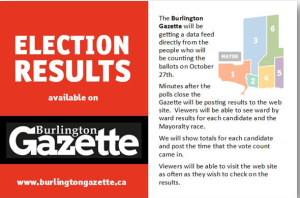 Gazette’s first piece of promotional material. Burlingtonians will be able to go to the Gazette web site and see what the most recent results are for the office of Mayor and the six council members.
We will not be posting the results for the Regional chair – while there are other people running for that office – it is evident that Gary Carr will be returned.
We will not be posting the results of the trustees for either the Halton District School Board or the Halton Catholic District School Board.
The Gazette is a not for profit organization – w do not have a revenue stream. The expenses to date have come out of our pockets and there is only so much time and financial resources available to us.
We will be doing on going news coverage and the results will be available once the school board trustee winners are known.
Our flyer – which measures 6 x 9 inches has, like every other piece of paper, two sides. We didn’t need both sides of the flyer – so we sold side two. Because our part of the flyer is about election results we had no problem with an individual running for office using side two.
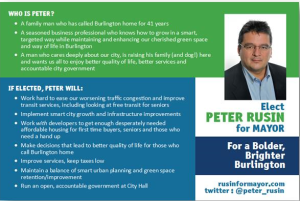 Sharing the space on a piece of promotional material should not be seen as an endorsement of the candidate. Our accepting an advertisement from a candidate for the office of Mayor is certainly not an endorsement. If Peter Rusin should win the mayors chair it will be because he did it on merit.
Rusin needed name exposure – the flyer is going to get to every home south of Dundas – that’s exposure.
Why not north of Dundas? There wasn’t enough time to get the flyers into production and into the hands of the distribution company in time for the scheduled delivery.

 By Pepper Parr By Pepper Parr
October 17, 2014
BURLINGTON, ON.
Why didn’t council stop the sale of public waterfront land?
Council votes 6-1 to sell waterfront land.
 Many people want a public path along the edge of the lake between Market and St. Paul streets; the property owners want nothing of that idea. Jennifer Hlusko, a candidate for the ward six seat on city council uses social media to communicate. A day isn’t complete without at least one, usually several links that she passes along. We never get to hear what Hlusko’s view is on the issue she is covering – she is just passing along good information.
Hlusko is a very intelligent woman; a little on the brittle side at times but this woman is on top of the facts.
She recently did a piece on the decision city council made to sell a small strip of land on the waterfront which, if completed, will put an end for a long, long time to any hope for a waterfront trail that this city could have.
We wondered just what kind of coverage this story had been given by the print media and are grateful to Hlusko for pulling all the local coverage together.
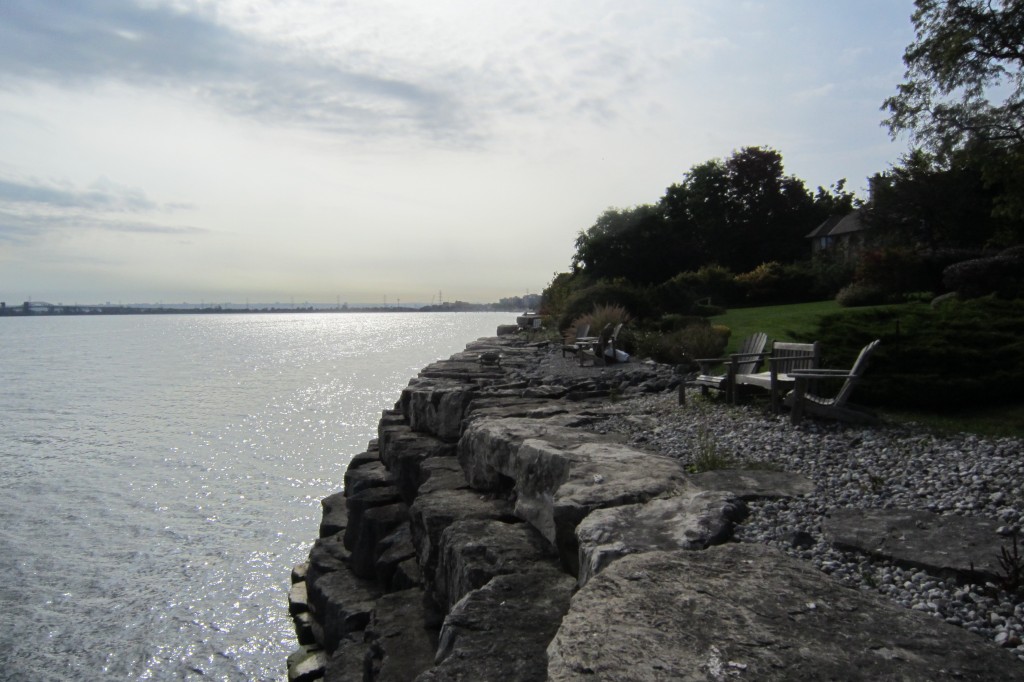 Will the average Tom, Dick or Harry keep the right to walk this piece of land. City owns part of it – but have decided to sell it. Other print media
• Oct 16, 2013: Burlington Post: Burlington council decides to sell waterfront property
• Oct 3, 2013: Burlington Post: Burlington considering selling public waterfront land to private hands
• Oct 24, 2013: Hamilton Spectator: Little: Waterfront public land up for sale
Burlington Gazette
• Jul 28, 2014: Waterfront Property for Public Use – it can happen if the public makes enough noise
• May 26, 2014: The sale of that waterfront land isn’t a done deal yet – a citizens group will be delegating against any extension at council this week
• Nov 2, 2013: Citizens speak – hundreds of them. Not all disagree with Council – but majority do. Was Council wrong?
• Oct 16, 2013: City Council votes 6:1 to sell waterfront. Public may never know what the selling price will be
• Oct 8, 2013: How city council managed to vote to sell waterfront lands and what some people want to do about that
• Oct 7, 2013: Part II Why does your City Council want to sell waterfront property rather than create a stunning lake front parkette?
• Oct 5, 2013: Part I Is your city council about to sell your birthright? Waterfront land just east of the downtown core may be sold
• Jan 1, 2013: Waterfront Advisory Committee sinks slowly into the setting sun
• Jun 6, 2011: Access to the Waterfront? Not everything you might think it is
The deal to actually sell the land has not closed. The Ontario Ministry of Natural Resources is involved in this as is one of the candidates for the office of Mayor.
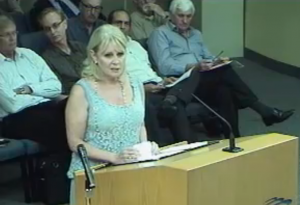 Janice Connell spoke for herself and her neighbours at the council committee meeting where the sale of the land was discusses. The neighbours are seated behind Ms Connell Peter Rusin served as an adviser to one of the property owners – there are three of them with Janice Connell serving as the public face at city council meetings. It was her husband, Mike Swartz who issued a veiled threat to council about a law suit. Statements like that always send a chill up the spines of council members who see a large legal bill that they have to explain to voters.
Rusin has said he served as an advisor to Swartz and that the file is closed. If Rusin is to serve as Mayor – he will have to be much more transparent than that.
The Mayor`s decision to sell the property doesn`t square with the concept of a waterfront that is accessible to the public or as a resource to be shared by the public. Burlington is still of the view that wealthy private interests can get what they want from this Council.
It is a very complicated matter but the people of Burlington aren’t stupid – tell them the whole story and they will let you know what they want you to do on their behalf.

 By Pepper Parr By Pepper Parr
October 17, 2014
BURLINGTON, ON.
The only thing I am worried about” said city Clerk Angela Morgan “is possible line ups at the polling stations on election day”.
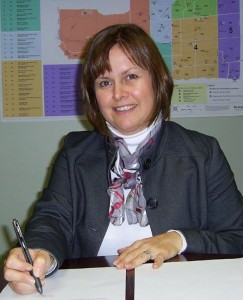 City Clerk Angela Morgan signing the 2010 election returns. Morgan is the staff member who oversees the running of the election. She has an experienced staff but when push comes to shove it is Morgan who calls the shots. She has had a couple of awkward calls to make but because her role is close to judicial – her word is the last word.
In 2010 there were five or six places where the line ups were far too long and people had to wait’ said Morgan. We found that a poll should not have more than 3500 people in it – 4000 tops.
In 2010 the voter turn out was 35.6% of those eligible to vote – one of the highest Burlington has had for a municipal election. If that turnout were to reach the 50% + level there would be line-ups
“So we revised many of the polling boundaries and added polling clerks at several of the polling stations – so I am pretty sure we are OK” said Morgan.
Advance polls opened yesterday and will close on Saturday.
Internet voting has been open for a few days – that too closes on Saturday.
Two interesting piece of information. Internet voting is up substantially over last year. Advance polls are up as well.
 Why, many people have asked, does internet voting and advance polls end on the 18th? Because the city then has to prepare the voters list for the election on the 27th. All those people who voted at the Advance poll and on-line have their names taken out of the list that the polling clerks work from. Why, many people have asked, does internet voting and advance polls end on the 18th? Because the city then has to prepare the voters list for the election on the 27th. All those people who voted at the Advance poll and on-line have their names taken out of the list that the polling clerks work from.
Could the amount of time be shorter so that more people get to vote on line; perhaps and there are a number of work arounds that can be put in place but on-line voting is new to Burlington and the one thing about what the Clerk’s office does is this – they are cautious because when they rush things and things go wrong – they go really wrong.
Angela Morgan is a cautious woman who gets a lot of complaints about what candidates are doing. “The election starts far too early: said Morgan “but there is nothing we can do about that – the Municipal Act sets out when a person can file papers to be a candidate” and for those who want to create a profile and name recognition – they have close to a year to do that
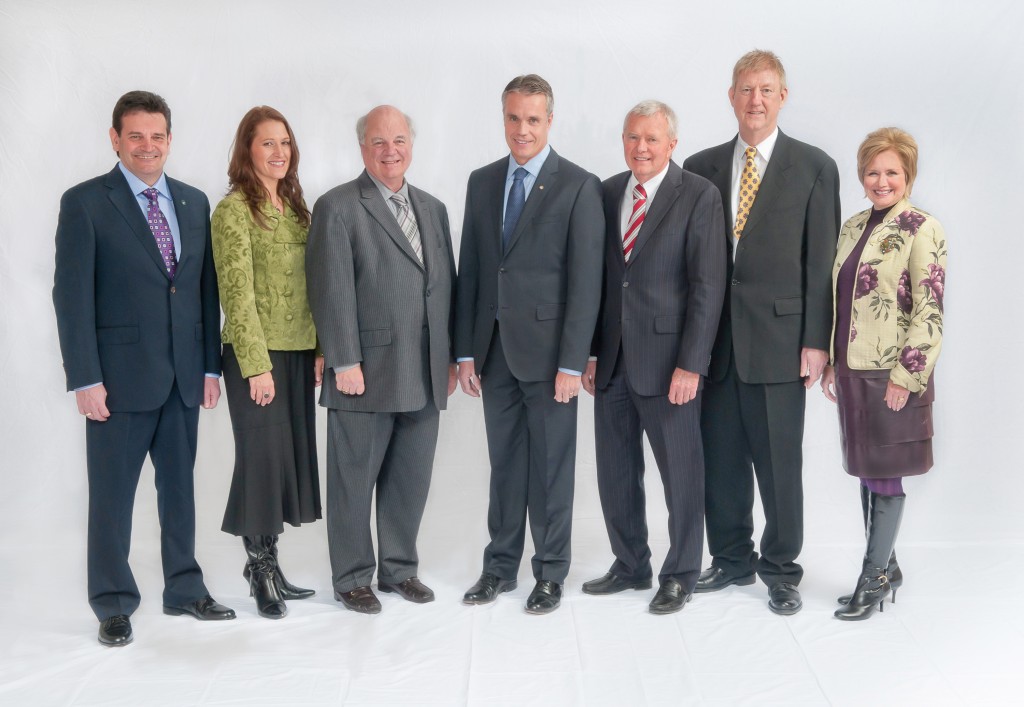 Will these seven become lame ducks on October 27th? If just one of them loses their seat – we have a lame duck council. As city Clerk everything Council does has to be signed by her before it is legal. Morgan plays a critical role in the administration of the work council does. On the morning of October 28th she will know what kind of a Council she has for the month of November. Six of the seven members of the current council have to be returned to office or the Clerk is faced with a “lame duck” council that cannot spend more than $50,000 that is not already budgeted for nor can Council hire or fire any of the senior staff.
That lame duck status holds for just a month – when the new Council is sworn in. Is it reasonable to assume that the significant seven will not all be returned? There are two council members who are at risk and a third that is in trouble.
Determining what a candidate can do with what are known as city resources is a problem the clerk has to contend with. “Some are more decent than others” Morgan explained. Some see the rules as something that have to be strictly adhered to – others will stretch the rules as far as they can.
During the campaign a Save the Planet event took place with more than 2,500 cities around the world holding demonstrations. New York city had more than 175,000 people out on the streets. Burlington had about 40 people waving their signs and placards.
The organization that held the event invited the Mayor, a known environmentalist to speak. The original intention was to start the event at the Gazebo in Spencer Smith Park but that is city owned property and Mayor Goldring was not going to speak at that location during an election.
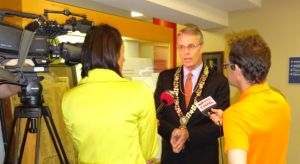 Mayor Goldring has taken to wearing his chain of office outside the Council chamber recently. That we think was making too literal an interpretation of the rules. Goldring should have put on his chain of office – talked about the environment and what global warming means to all of us and not say a word about the election and the city’s Energy Management Plan.
Ward 2 Councillor Marie Anne Meed Ward rented the Shoreline Room at the Art Gallery of Burlington for her campaign kick-off. The AGB is an arm’s length operation with its own board and while the city owns the building it is run by the AGB board.
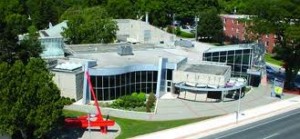 No photo ops for election candidates on this site. Morgan had a conversation with then AGB president Ian Ross but as Morgan put it “I always struggle with situations like this.” Another candidate running against Meed Ward wanted to film some footage at the entrance to the AGB and was told they could not do that; where does one draw the line?
For Angela Morgan – it is all about both enforcing and interpreting the rules – she seems to get it right most of the time.
Morgan, who lives in Hamilton has voted – online

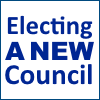 By Staff By Staff
October 17, 2014
BURLINGTON, ON
 Angela Paparizo and Trevor Copp. He got the ball rolling in the arts world – she now coordinates arts and cultural events for the city.
It was in 2012 I think when Trevor Copp appeared before city council saying as an artist he wanted to be able to ply his trade in the city he lived in. That was the shot across the bow that resulted in the creation of the Arts and Culture Collective of Burlington (ACCOB) and the hiring of a cultural co-coordinator.
It led to the holding of the critically acclaimed No Vacancy in 2013 and the follow up event at the Village Square that showed the public how vibrant the place could be.
Art and culture got out of the shadows of the newly branded Art Gallery of Burlington and placed artists we had never heard of on the public agenda. Members of Council took a new interest in the arts and were prepared to push some taxpayer dollars in that direction. Burlington has come a long way since the last election
It is useful therefore to know what the candidates had to say about how they see the arts and culture in Burlington. The material comes from the ACCOB.
The mission of the Arts and Culture Collective of Burlington is to advocate for the arts and culture of Burlington, ON and to increase appreciation, support and involvement with arts and culture in the community.
Our organization was founded to bring the voices of the Arts and Culture in our city to be heard in City Hall. We are aiming to help shape the Cultural Action Plan, and receive budgets and execute the ‘Action’ in the Plan. In order to keep moving forward with this plan, we requested responses to these four questions from all registered candidates. They had the opportunity to respond and responses were published to our Collective. Their replies were distributed throughout the contacts and social media membership of the Arts & Culture Collective (over 360 local members).
QUESTIONS:
1. What is your platform on Arts & Culture in Burlington?
2. The Cultural Action Planned passed unanimously in Council in 2013, yet the first new budget item called for by the plan – establishing a City Cultural Manager – was defeated. Please comment on this vote and state your intention moving into the next term on the role of a City Cultural Manager.
3. A funded external body (for example, an Arts Council) is the second item called for in the approved Cultural Action Plan. If such an organization is properly researched and consulted on, would you vote to fund this external body in the next term?
4. Grants is the third major budget item in the Cultural Action Plan. Would y…
MAYORAL CANDIDATES
RICK GOLDRING (INCUMBENT)
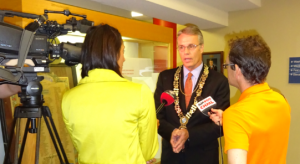 1. I want to continue with the arts and culture investments that the city currently makes. The Art Gallery of Burlington, Burlington Performing Arts Centre, the Museums, Student Theatre, Drury Lane Theatre, Theatre Burlington, the Teen Tour Band along with investment in the Sound of Music Festival and our twinning relationships with Appledorn, The Netherlands and Itabashi, Japan all contribute to making Burlington a culturally vibrant city. We need to leverage our investment with the objective of broadening the reach of our various cultural programs and proceed with thoughtful implementation of the Cultural Action Plan. 1. I want to continue with the arts and culture investments that the city currently makes. The Art Gallery of Burlington, Burlington Performing Arts Centre, the Museums, Student Theatre, Drury Lane Theatre, Theatre Burlington, the Teen Tour Band along with investment in the Sound of Music Festival and our twinning relationships with Appledorn, The Netherlands and Itabashi, Japan all contribute to making Burlington a culturally vibrant city. We need to leverage our investment with the objective of broadening the reach of our various cultural programs and proceed with thoughtful implementation of the Cultural Action Plan.
2. I did not support the Cultural Manager as I want to see how we make out this year now that we have a full time cultural planner. Council will revisit this during the 2015 budget discussion.
3. I am definitely interested in exploring the idea of an Arts Council type of structure. We need to be very clear about the purpose and how the organization will fill its mandate.
4. I know Oakville has a granting program. I need to understand more how a granting program would work. What type of artists would be eligible? What is the objective of the grants program? Would the grants be for new artists or emerging artists?
PETER RUSIN
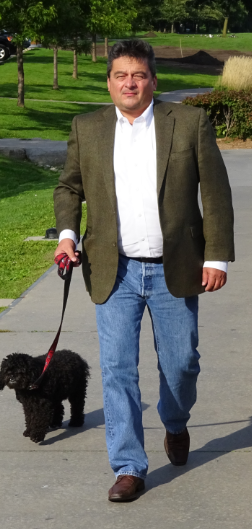 1. Arts and culture are an integral part of any strong and diverse community. Enhanced quality of life for the people of Burlington is the reason I am running for Mayor, and underlies all elements of my platform. With smart growth comes enhanced arts and culture opportunities. When we build upon our already diverse and rich community, when we attract new revenue, when we recognize the importance of arts and culture and fund it accordingly, we further enrich our city and the people who call it home. We can and should capitalize on Section 37 to provide arts and culture funding within a defined radius of any new development, together with council input and desired priorities. 1. Arts and culture are an integral part of any strong and diverse community. Enhanced quality of life for the people of Burlington is the reason I am running for Mayor, and underlies all elements of my platform. With smart growth comes enhanced arts and culture opportunities. When we build upon our already diverse and rich community, when we attract new revenue, when we recognize the importance of arts and culture and fund it accordingly, we further enrich our city and the people who call it home. We can and should capitalize on Section 37 to provide arts and culture funding within a defined radius of any new development, together with council input and desired priorities.
2. I don’t understand the defeat for a cultural manager position after having conducted all that consultation and study work, but,
I would have to review the job description and how that position would fit into the overall organizational structure at the city before committing to
supporting a full time staff position. Also, it may be that more than one position would be required to satisfy the intent of the cultural action
plan. However, if the city was managed in a more fiscally responsible fashion, then perhaps the funding of such a position and/or department would not be such an issue. Overall, I support the continued efforts at raising the relevance of Arts and Culture in this city.
3. My support would depend on the role of an Arts Council relative to the roles and responsibilities of a City Cultural Manager. It depends on what the funding demands would be, who would be made accountable for the management of the arts and culture department. It would be ideal if there was a plan that could make the department self sustainable with the support of the city. It would also be helpful if the Performing Arts Centre which is a big part of the issue, an entity that could generate profit to assist in further funding the arts and culture initiatives in this city. This city needs to stop spending money on further studies and simply get on with letting arts and culture flourish.
4. This city has a lot of urgent need priorities dealing with pressing issues like healthcare, poverty, and housing, that may promote stronger
justification for funding allocations from the community than for arts and culture. I would like to provide grants, but, it may require a stronger
relationship working with private sector funding sources. There are many provincial and federal grants available to artists; the city may be better focused helping to direct local artists to existing grants.
WARD ONE:
RICK CRAVEN (incumbent)
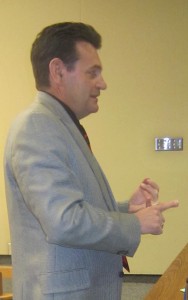 Rick Craven: Best committee chair the city has; not big on the warm fuzzy stuff through. Needs a hug badly. 1. I support proper funding and implementation of the Cultural Action Plan.
2. I was the only member of Council to vote in favour of the Cultural Manager as part of the 2014 budget and will do so again when the issues comes forward in 2015.
3. Yes.
4. I accept that we need a lot more discussion about how this will work, but in theory I agree we must move in this direction.
MARGARET STEISS
To the Arts and Culture Collective of Burlington
As an artist myself I have a strong interest in supporting and promoting arts and culture in Burlington. Art and culture enhance our lives on many levels and a strong arts community helps to make Burlington a more enjoyable place to live. We cannot however be blind to reality. This past year has shown us that we have some major challenges ahead, particularly with infrastructure. The way we handle arts and culture needs to be done in the most fiscally responsible way possible. What I would like to see is an easily accessible website that lists all arts, culture, recreation and leisure groups in one place so people can find groups they are interested in quickly and easily.
Before I could agree on a paid General Manager I would need to look carefully at what supports are already in place at city hall and to make sure we are not duplicating services.
While a paid arts council would be nice I think we would be better served right now by a volunteer arts advisory committee such as we have for other interests such as heritage. The money saved on salaries could then be put towards grants which would directly help those in the arts.
I do believe in grants in particular towards helping groups become self-sustaining.
JASON BOELHOUWER
 1. I believe that the City has some valuable Artistic and Cultural physical assets (ie: drama centre, Art Centre, Performing Arts Centre) The City is also blessed with some wonderful groups (Teen Tour Band, various Guilds and Performance organizations etc.), I think that these groups are best left to manage themselves without interference or oversight from the City. I would also like to see them be as self sufficient as possible. 1. I believe that the City has some valuable Artistic and Cultural physical assets (ie: drama centre, Art Centre, Performing Arts Centre) The City is also blessed with some wonderful groups (Teen Tour Band, various Guilds and Performance organizations etc.), I think that these groups are best left to manage themselves without interference or oversight from the City. I would also like to see them be as self sufficient as possible.
2. I assume that there was a reason for this, without knowing the behind the scenes efforts on both sides I have no idea why it was defeated. At first blush it would seem that if the Plan was approved, then funding considerations should have been part and parcel in the decision making process.
3. The previous question sounds like it puts the entire CAP on hold. If the Plan is in place but the funding is being defeated by the current City Council, the question is what is wrong with the overall picture ? Logic suggests that if there is a problem getting funding for the first item then the same problem will exist for subsequent items.
4. See answer to item #3
PATRICK ALLEN
1. Arts & Culture is an essential part of the health & vibrancy of this city. The development and implementation of a viable, sustainable Arts & Culture community is something I fully support and would encourage all council members to support vigorously.
2. A. I couldn’t comment on what motivated people to vote one way or another. I think that sometimes council may make decisions based on their personal choices rather than the evidence in front of them or what their constituents may
want. My intention would be to support the hiring of a person who could deliver on the objectives through a variety of means. All I would ask for is to see several viable options on the table prior to casting a vote.
b. There are several comparisons made throughout the documentation to other cities. Other cities have 4,5 6, 12 employees and X amount of funding. This sounds like a Rick Goldring thing. Lets think outside the box and collaborate on an idea or ideas that will have an impact that is visible. I want to support a proposition that is different than other cities, one where something unique is happening. Wouldn’t it be great to be known as the Arts & Culture centre of Canada?
3. Again, with a variety of options presented that are sound, viable, sustainable, I could get behind the project. Perhaps a graduated pilot project might be the answer to the negative council vote. Show me something different that doesn’t take tax dollars away from essential services. We are a rich community and need the Arts but we also need to be able to generate revenue for the city on a cost recovery basis through these activities.
4.. Government grants are great and I would be looking to the province or the federal government for those grants. Endowments, scholarships, small business initiatives are all great ways to support the Arts. My voting would support some sort of creative initiative in terms of funding; one where the taxpayer does not carry the full load.
WARD TWO
Marianne Meed Ward (incumbent)
 Ward 2 Councillor Marianne Meed Ward. Unbeatable? Some Tory’s seem to think so. 1. Vibrant local arts and culture contributes to our city’s quality of life, economic prosperity, social inclusion and vibrancy. The majority of the city’s cultural investment has been in buildings; we need now to focus on people who provide culture. I support a citizen’s committee on culture to foster collaboration and oversee grants; expanded criteria for facility grants; and single oversight of grants for festivals and events with clear criteria. The downtown has a unique role to play in culture, and as the councillor for downtown I’m committed to exploring a cultural district downtown, as recommended by the Downtown Task Group.
2. The Plan did not call for the manager position in the first year. Staff advised council that through staff realignment they can find the additional cultural manager position within the existing staff complement. I support that approach as council’s goal city-wide has been to find new positions by staff realignment. I did support the increase in cultural staffing from half to full time. My first priority for additional cultural investment is directly to artists to defray performance space cost (See item 4).
3. I am open to exploring options for an external granting body, for example a citizen’s committee on culture, with budget and staffing support. This committee could do for culture what Heritage Burlington has done for heritage – overseeing grants, loans and rebates to heritage owners, fostering heritage appreciation and awards, collaborating with heritage owners on preservation and more. This group is citizen-led with staff support and a budget over $100,000. This model could work for culture, bringing all the city’s grants to groups and events under single oversight with transparent criteria and budget, and fostering cultural collaboration.
4. Yes, subject to further definition of eligibility. The focus should be on venue space for local groups and events. Culture is already happening in Burlington, but artists have told me it’s difficult to find affordable, appropriate space, whether it’s a venue for a play or film festival, space to display art, or a venue for modern art. The Burlington Performing Art Centre is cost-prohibitive for some local groups. The city’s existing facility fee waiver program excludes city buildings operated by an independent board, like the BPAC, Art Gallery of Burlington or libraries/museums. Facility grants must change to include these buildings.
Philip Papadopoulos
1. I am a whole-hearted supporter of the arts and have been my entire life. The arts are a core building block of any community and like all special interest groups in the city, it deserves a fair share of attention.
2. As with any issue faced by council, there are a number of factors that determine whether a plan is moved forward in a timely manner. These factors need to be carefully considered at the proper time. Just because a budget item is defeated does not mean that it will not surface again in the future to be looked at. If the conditions are right, a motion will pass. I cannot comment on specifics as to why each councillor voted the way they did and their reasoning.
3. The prudent thing to do would be to see what the results of the research are before making a decision on this. Proper research and consultation does not equal a positive result. The research may find a positive result but it also may find a negative or indifferent result. What the city needs are leaders who are open minded and willing to listen before making an informed, responsible decision about how taxpayer’s money will be spent. Recklessly agreeing to something without considering the ramifications would be irresponsible.
4. As with the second and third questions, there is more to consider about an issue before lending your support to it. I am willing to listen to what people have to say, I will meet with them to discuss issues and try my best to educate myself on each topic to make an informed decision.
Kelly Arnott
 werv 1. Arts and culture is more than a “nice to have”. A vibrant arts scene contributes to the quality of life of all residents, helps to retain our youth, and bring people and businesses here. Evidence of creative expression throughout a city is one of the indicators of a healthy, thriving community. Fostering an environment that allows arts and culture to thrive is especially important in our downtown. A lot of time, research, and expertise has been put into the Cultural Action Plan, and it’s time to start implementing and funding some of the recommendations, on a gradual basis.
2. Burlington’s investment in human resources specific to culture is lower than other municipalities, so the recommendation that we hire a Cultural Manager is not unreasonable. I will support it. I would however, due to budget constraints, consider the possibility of the position being something less than full-time, especially since a position for an Arts Coordinator has also just been posted with the City. If an external body is formed and funded, I think a Cultural Manager and Planner working together with this arts council would be most effective, in helping our arts community to move forward.
3. Yes. I think this is important. From what I understand the Arts Council in Hamilton is very effective and would be a great example to follow. I’d like to see a variety of funding sources though—not only the City of Burlington. The Province and the Ontario Arts Council should also contribute to funding.
4. Yes, although we’d still need to discuss how this will work and how much the City can afford. If and when an arts council is created, it would seem to make the most sense for that council to include someone who is experienced and qualified in applying for grants from various levels of government. If there are opportunities to work with the business community, those should be explored. (i.e. funding of arts scholarships, sponsorships of special events like Cirque etc).
Andy Porecki
I have been a strong advocate for arts and culture in Burlington as a direct participant as well as a supporter. Volunteering for the Sound of Music Festival for more than 7 years, (currently I am the festival President), has given me a greater appreciation and understanding for the need and value of arts and culture.
1.I believe that Arts & Culture in Burlington helps to form the bedrock of a vibrant community. It’s through Arts & Culture initiative that Burlington has become known for it’s community feel. With new arts organizations choosing Burlington as a home, I intend to foster and grow these relationships.
2. As I was not a sitting council member during these deliberations I cannot comment in detail on why this motion was defeated. However, moving forward I would support a critically considered arts council or cultural manager. This is not a simple process, and as was mentioned in public articles previously, the decision cannot be made lightly. The right person, and the right volunteers would need to come together in harmony to create a sustainable future for this aspect of our city.
3. A question in broad terms is difficult to answer simply yes or no. Based on a viable fiscal plan, involving the right people, and sensible budgets, I would absolutely support such a committee. However I will not support it without a diligent plan to create something that’s sustainable, and garners a viable return to our city.
4. Again, based on research and a plan, I will always support the artists of our city. Whether that involves granting, or other potential incentives, I’m willing to work with my fellow council members to promote and foster arts in our community.
WARD THREE
John Taylor (incumbent)
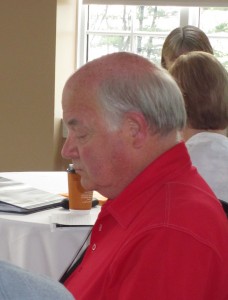 Ward 3 Councillor John Taylor will want to have his mitts all over who is on the committee that selects the artist chosen to do the public art for the Mountainside recreational centre. While infrastructure repair and renewal and economic development are the two top needs in Burlington, I believe it is important to start to implement the City’s Cultural Plan. Therefore I am committed to establishing the position of Cultural Manager and an Arts Council in the next term. However, a substantive business case would have to be presented before I would consider grants to individual artists. The City has many financial challenges due to declining development plus commitments to a new 20 year infrastructure repair and renewal programme and a renewed emphasis on economic development. Not all needs can be met by our present financial plan, so they must be prioritized and partially funded from corporate restructuring savings and redeployments.
WARD FOUR
Jack Dennison (incumbent)
 “I don’t want to hear anymore delegations” said Councillor Jack Dennison. 1.I certainly attend arts and culture events in Burlington on a regular basis, including the recently completed Sound of Music Festival, AGB and the BPAC (a favourite is the Burlington Concert Band) and Drury Lane Theatre (where I have been an advertiser for decades).
Burlington is a community with significant infrastructure needs; in particular, road, sidewalk and curb repairs and as long as that is the case, then I will continue to not support arts expenditures like $100,000 for the orchids on Upper Middle Road, the artists benches on the Centennial Bike Path at approximately $10,000 each in comparison to standard benches for $1,000 each, the artists bike racks instead of standard racks that hold more bicycles more securely.
2. The 2014 budget was a challenging budget trying to balance all of our community needs and wants and still maintain a budget increase even close to inflation which is what the majority of our constituents want us to maintain as an upset limit.
The manager of Cultural Services proposed position included an expense of $136,000. I believe that having the current cultural planner in Parks & Recreation is an appropriate start to improving our Arts & Culture program and that we should reevaluate as part of the 2015 budget, the need for the addition of Manager of Cultural Services. I am supportive of such a position as long as it can be funded within the existing staff complement.
3. Assuming in 2015 Budget we are again struggling with a realistic budget increase, I would be looking for budget reductions in other areas in order to have funds available for this incentive. Council’s history shows that new programs get added in but underutilized programs do not get dropped. There are activities that are included in the city budget that are not required. I will continue to look to balance demonstrated needs versus underutilized wants.
4. I think we should be going through a logical, balanced and sustainable progression. First the dedicated staff position approved in 2014 followed by the cultural Manager, followed by a funded Arts Council and finally by a grant program while always coming forward with a responsible budget that balances our community needs and wants with fair, taxation.
Doug Wilcox
1. I have always supported the Arts and Cultural community. When I was on Municipal Council in Orangeville I secured a $750,000 Provincial grant to fully restore the 100 year old upstairs theatre in the Town Hall, we hired Jim Bettes to start up and run what is now known as Theatre Orangeville, I sat on the board for many years.
2.As mentioned above Orangeville Council hired a full time person to run Theatre Orangeville.
3.Yes I would.
4. Yes I would.
Carol Gottlob
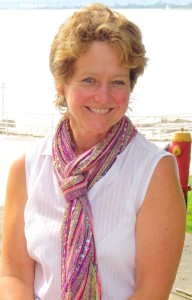 When I moved to Burlington in 1995, I wasn’t entirely familiar with the arts and cultural scene, and to be honest, I wasn’t even expecting it. What a pleasant surprise! At the first opportunity I became a volunteer at the Burlington Art Centre. Art and culture are the hallmarks of a living city. Why else would I be visiting New York City right now, if not to take in a Broadway show, visit the museums and galleries, stop in at a jazz club and delight in the street life? I think over the years, Burlington has quietly demonstrated that art lives here. The Burlington Art Centre (now the Art Gallery of Burlington), the Sound of Music Festival, the Teen Tour Band are all hallmarks of this community. Therefore, they deserve to be supported by patrons, business and the C.O.B. alike. When I moved to Burlington in 1995, I wasn’t entirely familiar with the arts and cultural scene, and to be honest, I wasn’t even expecting it. What a pleasant surprise! At the first opportunity I became a volunteer at the Burlington Art Centre. Art and culture are the hallmarks of a living city. Why else would I be visiting New York City right now, if not to take in a Broadway show, visit the museums and galleries, stop in at a jazz club and delight in the street life? I think over the years, Burlington has quietly demonstrated that art lives here. The Burlington Art Centre (now the Art Gallery of Burlington), the Sound of Music Festival, the Teen Tour Band are all hallmarks of this community. Therefore, they deserve to be supported by patrons, business and the C.O.B. alike.
Historically, I believe the community artists and historians took care of the “business” of art and culture, and did so in a very fine way with very little government support. It is now, only after being widely recognized as a creative centre in the province of Ontario that we need to look for ways to sustain the success of Burlington art and culture.
So, in answer to the second part, regarding the position of City Cultural Manager, it is my belief that perhaps the time for that is yet to come. It is apparent that other cities such as Kingston and Mississauga spend considerably more on support of the arts and culture in their communities, but again, this begs the question, if we have been doing so well, why do we need a City Cultural Manager? The answer is in the ever increasing expansion of the art world in the city. Not only that, but the nature of art is changing by virtue of technology. So, a City Cultural Manager? Yes. When? Not sure, but in the not too distant future. In the meantime, we have existing people in place to look after the needs of the city, so we are not abandoning the cause.
Meanwhile, an Arts Council makes a lot of sense to me. I also very much like the idea of a spokesperson for each ward. It is important that the activities across the city be coordinated, and a spokesperson in each ward would guarantee that no party is left out. I would vote in favour of a grants program, as long as it is monitored to evaluate the success/failure, and limited to a period of assessment.
So, in closing, I would say that art/culture is equally important to the life of a community as business is, and that they are not mutually exclusive. If there are programs in place to support business, there should be programs in place to support Art/Culture in whatever way possible because human expression through music, dance, film, theatre and visual art has proven itself unstoppable.
I thrive on change. It is essentially the reason I am running for office. I don’t believe in change simply for the sake of change, but change as a channel for improvement and development. The question I ask myself when considering changes to existing policies, programs or delivery of programs is this: “Is this
progress?” If so, let’s give it our support. If not, let’s reconsider. Which is why I’m hoping the people of Ward 4 will chose to change the existing leadership, and explore other possibilities with me.
WARD FIVE
Paul Sharman (incumbent)
 Paul Sharman served on the Shape Burlington Committee along with Lancaster. He was a bit of a “bull in a china shop” with that organization and brought the trait along with him when he got electd to Council. 1. I HAVE BEEN AN ACTIVE SUPPORTER OF ARTS AND CULTURE SINCE I STARTED ON COUNCIL. I ORGANIZED A NUMBER OF MEETINGS WITH TREVOR COPP, AND EXECUTIVE DIRECTORS OF THE BAC, BPAC, BPL, TOURISM, MUSEUM AND RBG TO ACHIEVE A LEVEL OF COLLABORATION BETWEEN STAFF. THE RESULT WAS A COMBINATION OF DOORS OPEN WITH CULTURE WEEK AND AN ONGOING DIALOGUE DURING THE DEVELOPMENT OF THE CULTURAL ACTION PLAN. I CONTINUE TO SUPPORT ART AND CULTURE IN THE CITY AND I LOOK FORWARD TO MAKING SURE WE HAVE A PROPERLY FUNDED AND STAFFED PROGRAM.
2. I AGREE THAT WE SHOULD HAVE A CULTURAL MANAGER; IN FACT, WE ALREADY HAVE SOMEONE ACTING IN THAT ROLE WHO IS DOING GREAT WORK. DURING BUDGET DISCUSSIONS I WAS NOT IN FAVOUR OF BRINGING SOMEONE IN IMMEDIATELY FROM OUTSIDE CITY STAFF THAT WOULD HAVE INCREASED THE OVERALL NUMBER OF EMPLOYEES. THE CITY MANAGER INDICATED THAT THE ROLE OF CULTURAL MANAGER CAN BE FILLED AS WORK FROM OTHER PROGRAMS IS REDISTRIBUTED. I STILL EXPECT THE ROLE TO BE FILLED IN SOME WAY.
3. I AGREE THAT THERE SHOULD BE SOME KIND OF EXTERNAL GUIDING BODY. MY PREREFENCE IS THAT IT SHOULD BE CAREFULLY CONSTRUCTED WITH A COMBINATION OF SUCCESSFUL, EXPERIENCED MEMBERS OF A VARIETY OF DIFFERENT ARTS AND CULTURE CATEGORIES. BURLINGTON DESERVES SUCCESSFUL AND PROFESSIONAL PROGRAMMING ACROSS ALL VENUES. FURTHER, I DO NOT BELEIVE IT SHOULD BE AN “OFFICIAL” CITY ADVISORY COMMITTEE BECAUSE THEY TEND TO GET TIED UP IN BUROCRATIC RED TAPE AND HEAVILY INFLUENCED BY CITY STAFF AND MEMBERS OF COUNCIL.
4. I DO SUPPORT FUNDING BECAUSE I BELIEVE ARTS AND CULTURE ARE INCREASINGLY IMPORTANT TO THE STRATEGIC DIRECTION OF BURLINGTON AND OUR VISION “WHERE PEOPLE, NATURE AND BUSINESS THRIVE”. TO THAT END, THE CITY HAS TO MANAGE ITS FUNDING PRIORITIES IN THE CONTEXT OF THE CITY’S OVERALL STRATEGIC GOALS AND FISCAL SUSTAINABILITY. LIKE STAFFING, THE CITY HAS TO BALANCE FUNDING DECISIONS.
James Smith
 1. – “Challenging” is a tired and cliche expression too often used in contemporary art & culture. I want the Arts & Culture in Burlington to “Challenge” us with BBFD projects 1. – “Challenging” is a tired and cliche expression too often used in contemporary art & culture. I want the Arts & Culture in Burlington to “Challenge” us with BBFD projects
(Bold, Beautiful, Fun, Delightful) so more members of the community actively support Arts and Culture
– As a Design Consultant, I want Burlington to mean something to the wider world or Art, Design and Culture – when I tell clients this where I’m based I want this to
mean something so I want to see the more accessible, BBFD Arts and Cultural events and we need to tell the region, the province and the world Burlington is a place practice, show
and learn about the arts and culture
– The cultural Action Plan (I participated in one of the sessions at the Art Gallery) is a baby step in the right direction; my one criticism is it’s too general and the call to action needs to be bigger – ie More Action, less Plan
– Arts Community needs to get out and connect more and directly with everyone in Burlington
– Arts & Culture Pitch night in February – think TED Talk meets Dragon’s den – 3 minutes to pitch one’s Arts and Culture ideas; here are my five pitches:
– A kid’s chalk art festival
– Self playing Musical devices (Singing Roads, Whistling Break Wall, Pedestrian Carillon Steps)
– Art Installations on the Bike Paths
– A prize to make the Hydro Towers on the beach COOL
– Tens of Thousands of people will be coming to the GTHA for PAN AM. We are on the main route from the USA to Toronto,
we are also on the main route to one of the largest tourist attractions in the world, Niagara Falls, the Arts & Cultural community
in Burlington should promote temporary Art & Cultural installations in time for PAN AM this will take some quick action by the city of Burlington For Burlington to attract the best and brightest citizens and businesses we have to have cultural activities throughout the city and not just centred in the downtown. My Vision East idea would encourage those involved in the cultural community to spread the wealth in our East End neighbourhoods.
2. – While I support the creation of a CEO or Cultural Pooh-bah position I don’t think this should be a city staff position but be head of an arms length organization with a board and funded (in part) by the city
– Rejecting the position is a far too typical technique at Burlington City Hall; agree on a direction, then don’t act when the resources are asked for. If I support a direction, like the Cultural Action Plan, then I’ll support the recommendations, and in this case the creation of a Cultural Manager
– If elected, I’ll work with the Arts & Cultural community to put to city council a more focused plan with more clear goals and objectives to prove to council the benefits for the city of a Cultural Pooh-bah.
-This position should be willing and able to work with, and help co-ordinate efforts with the CEO’s of the Museums, Art Gallery, Festivals, and Performing Arts Centre
3. – This should be the first priority for Arts & Culture – set up the council – it should be a citizens committee or not for profit, run under a Joint Venture Agreement with the city (City Staff can assist in setting this organization up & should help fund it)
– In principal, I support this, however; I see an Arts Council having a marketing, management and evangelizing function for Arts and Culture
– Not just a cheque writers we need cool kids shaking you and me & my neighbours up and out of our work-a-day malaise
4. – Again, in principal yes, perhaps a hybrid model is called for say a cross between the Toronto Arts Council The Burlington Community Foundation and ARTSCAPE so it is partially self funding
WARD SIX
Blair Lancaster (incumbent)
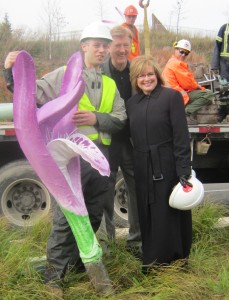 A delightful work of art – but you may never see it – sitting as it does in the middle of Upper Middle Road yards away from a railway underpass. 1. During my term on Council I have been excited to participate in the successful projects that have been approved so far. I am actively involved in engaging Ward 6 in the creation of the Mural at Haber and was very proud to find a home at Haber for the Art that I located at Hansen Brick. Arts and Culture is extremely important to me as I feel it contributes greatly to the vibrancy of our community. I would like to develop a program that not only celebrates arts but promotes the Artist.
2. A solution to advancing arts and culture in our community is not as simple as hiring someone. We have been down this road before with little to show for it. I would prefer to spend the money on projects that would provide visual results and net community benefits. The proposal to hire for this position left a lot to be desired as there was no money allotted for projects. We need a more comprehensive solution to advancing the Arts.
3. In our discussions regarding the Cultural Manager Position, I clearly articulated that a committee could easily manage a plan to promote Arts and Culture in our community. I would prefer to see funding going to actual projects rather than to a salary. Allowing Artists to participate in this funding would offer an opportunity for them to perform, showcase their Art and help them build their portfolios and therefore promote their artist talent.
4. In my view we must find a way to overcome prohibitive legislation that currently prevents us from limiting fund participation to local groups. Currently when a request for proposal is issued, it must be extended to anyone in the World and cannot be exclusive to Burlington. I would like to enter into discussions with staff, legal and the Arts community to find funding solutions that will promote local artists.
Angelo Bentivegna
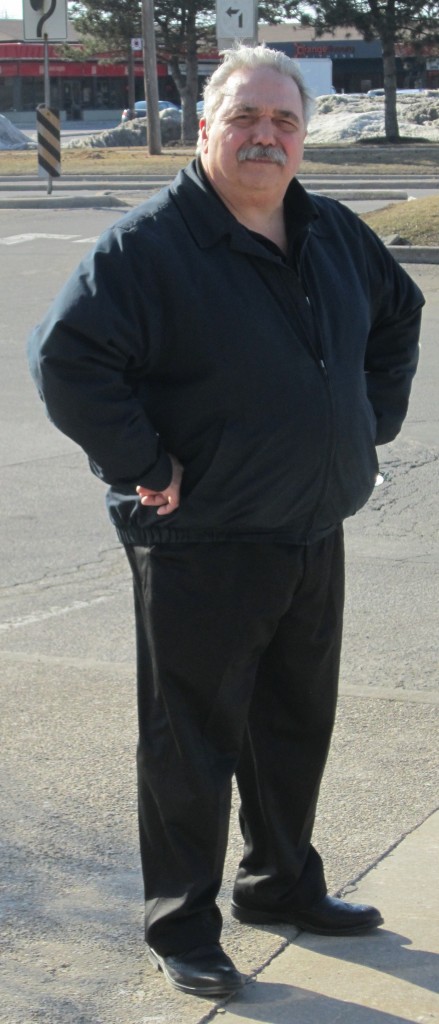 werv Thanks for the opportunity to have my voice heard on the Cultural Action Plan and my vision on the future planning and management of this very important program that will give our City distinct character and attitude.
1-As a 30 year resident of Burlington and a local business owner here in our city for over 25 years, I believe it is time to move forward to create and implement a unique and dynamic Cultural plan in our City. I have raised four children, all of whom have had many positive experiences with the arts, theater, at local events, and sports. We now have grandchildren…and the time has come to step it up.
2-I completely support a position of a City Cultural Manager. Our neighbourhoods are all maturing and we need to take a leadership role in molding the approved Cultural Action Plan. Our goal is to keep our residents connected in our City, wanting more and having fun in our City.
3-I support the need to hire a qualified consultant to explore and guide us with the knowledge and help us drive this bus. Staff and Council can then take appropriate action and direct energies to bring this plan to fruition.
4- I will collaborate with my council colleagues to solicit all levels of government, including our municipality,as well as local industry and build partnerships to generate granting funds. I would also suggest creating an annual awards program/evening (gala) to highlight accomplishments of Burlington’s most creative achievers and acknowledge excellence. Scholarships can be awarded to young local artists or contributors to the Cultural environment with funds going toward continuing their education in their field.
Jennifer Hlusko
 1. Cultural development has been a top priority for me, as evidenced by all the years of music lessons, rehearsals, summer camps, and the musical instruments etc we have had has gone towards the cultural development of my children. Chamber music, ballet, opera, symphony, these are the ways my family spent time together, but these events were nearly always found outside of Burlington. I really believe that the future of the arts is dependent on building an audience. I understand first hand that if you don’t build the audience with children, by making it accessible to families, you lose the arts. There are so many opportunities for more arts here, but people have to be exposed to it. It is so disappointing that Burlington institutions have been so negligent in hiring and highlighting local talent. As soon as you involve local residents, you instantly have access to their network of audience. People are less likely to invest in something they have had no exposure to. Additionally, as the owner and restorer of a heritage home, I value the cultural heritage of Burlington architecture. I am also passionate about the horticultural arts. My gardens are a celebration of Ontario’s diversity with a focus on less common native plants and trees. I have invested myself fully in designing and growing my gardens and I view them as my art. 1. Cultural development has been a top priority for me, as evidenced by all the years of music lessons, rehearsals, summer camps, and the musical instruments etc we have had has gone towards the cultural development of my children. Chamber music, ballet, opera, symphony, these are the ways my family spent time together, but these events were nearly always found outside of Burlington. I really believe that the future of the arts is dependent on building an audience. I understand first hand that if you don’t build the audience with children, by making it accessible to families, you lose the arts. There are so many opportunities for more arts here, but people have to be exposed to it. It is so disappointing that Burlington institutions have been so negligent in hiring and highlighting local talent. As soon as you involve local residents, you instantly have access to their network of audience. People are less likely to invest in something they have had no exposure to. Additionally, as the owner and restorer of a heritage home, I value the cultural heritage of Burlington architecture. I am also passionate about the horticultural arts. My gardens are a celebration of Ontario’s diversity with a focus on less common native plants and trees. I have invested myself fully in designing and growing my gardens and I view them as my art.
I believe that I am the perfect advocate for Arts & Culture in Burlington, as I have seen the lasting impact the arts have had on my family. The Cultural Action Plan report is very well written and logical. I completely support the strategy.
2. Having thoroughly read the Cultural Action Plan, I do not feel like the roll out needs to include a Manager at this time. Had the City staff made a more compelling business case for the strategic need for the role this year, I would have supported it. The cost benefit needs to ensure that a large salary, such as the one indicated in the budget proposal, has concrete and measurable deliverables in year one. Going forward, I would support a Manager role that is phased in at the recommendation of the Cultural Plan. I think the money would have been better spent on initiating a granting program. Spreading that money amongst 20 arts groups would create more art experiences and develop a greater audience.
3. Yes, there has to be a council. I would look to municipalities that have done it well, to see how they run it. Certainly in music, a performing musician would not have the time or necessarily the strengths required to carry out the critical administrative duties required to access the grant dollars and keep the organization running smoothly. There are lots of great arts lovers and advocates, many of whom have been artists themselves, who would have the skills required to run such a council.
4. Yes. Without a grant, there isn’t any point following a Cultural Action Plan. Grants are how you support the local little guy. There are so many exciting ways to build and develop the arts in Burlington that need grants to execute. Imagine funding a group of world-class local musicians to do unique ensemble music for ten year olds, pairing unusual instruments, like the guitar, the harp, and the piccolo! Grants are essential to creation and experimentation. I would vote to fund a grants program, especially with a strategic focus of offering grants aimed at building an arts appreciative Burlington audience.
Jim Curran
 Burlington has a rich and diverse arts and cultural community. All three of my children are involved in the Arts in one way or another. Even my five year old takes classes at AGB throughout the year. Burlington has a rich and diverse arts and cultural community. All three of my children are involved in the Arts in one way or another. Even my five year old takes classes at AGB throughout the year.
As an elected Councillor for Ward 6 I will Endeavour to assist in sustaining worthy initiatives within a framework of fiscal responsibility.

 By Staff By Staff
October 12, 2014
BURLINGTON, ON.
For the book lovers in town it will be an evening to remember.
 Carrie Snyder Five renowned authors will gather at the Art Gallery of Burlington on October 28th.
 Miriam Toews The five are all finalists in the 2014 Rogers Writers’ Trust Fiction Prize . Hosted locally by A Different Drummer Books, in partnership with the International Festival of Authors and The Writers’ Trust of Canada the evening will feature: Andre Alexis, Steven Galloway, K.D. Miller, Carrie Snyder and Miriam Toews .
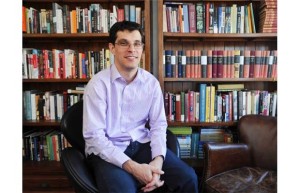 Steven Galloway The event begins at 7:00 pm in the Shoreline Room.8 7pm ~ Art Gallery of Burlington, Shoreline Room. Tickets are $10, available at A Different Drummer Books. To reserve, please contact us at (905) 639 0925 or diffdrum@mac.com.
 K.D. Miller The finalists for the 2014 Rogers Writers’ Trust Fiction Prize will present their works, just days before the recipient of the $25,000 award is announced.
 Andre Alexis The authors and their books: Andre Alexis, Pastoral, Steven Galloway, The Confabulist, K.D. Miller, All Saints, Carrie Snyder, Girl Runner and Miriam Toews, All My Puny Sorrows
More information about the prize and the nominees can be found at this link:

 By Pepper Parr By Pepper Parr
October 11, 2014
BURLINGTON, ON.
For those families that have children who are autistic – everyday life is different. One of the fears is that as the child grows he or she may begin to wander and suddenly be lost. The fear and the dread in the hearts of the parents is palpable: where is my child?
The Halton Regional Police have launched a new Autism Registry.
Autism Spectrum Disorder (ASD) is a complex developmental disability that typically appears during the first three years of life: it is the result of a neurological disorder that affects the functioning of the brain. It is believed that over 100,000 people in Ontario are diagnosed with some form of ASD.
This voluntary registry is designed to provide a better system of service delivery to community members by ensuring that front line officers have access to vital information when responding to occurrences involving people with ASD.
The registry system provides a proactive means to gather information voluntarily provided by the person registering in the program, or the parent or guardian of the registrant. This information would include the description and photograph of a registered person, behaviours, routines, communication abilities, expected locations of travel, as well as other detailed information.
This registry is entirely voluntary and operates under the basis that families willingly provide police with critical information in relation to a person living with ASD which will help officers in their overall response. By gathering this data in advance of any potential occurrences, police will be entering into a situation with more information, allowing them to have a more specific understanding of what they are responding to.
This registry was developed in conjunction with Autism Ontario – Halton Chapter as well as with information provided by other police services with similar registries. Participating in the registry simply requires access to the internet and visiting the Halton Police web site. Link here.
Information on the Registry web site includes:
What is the Autism Registry?
Can individuals with other special needs participate in the registry? Or is it restricted to those who fall within the Autism Spectrum?
If I don’t live in Halton Region, can I still register my child/dependent adult in the Registry?
Will the information be immediately available to police officers as soon as I register?
Will I need to quote my confirmation occurrence number when I call police?
Who has access to the Autism Registry?
Can I update my profile more than every year if there are changes? How do I do that?
Will I be notified when the annual renewal is required?
How will this registry help if my child/dependent adult goes missing?
How do I contact Autism Ontario?
The Halton Regional Police continue to promote advocacy, support and education for families who are affected by the challenges of ASD and do so both internally and with our community partners.
Autism directly affects several members of the Halton Regional Police Service.

 By Pepper Parr By Pepper Parr
October 8, 2014
BURLINGTON, ON.
During the debate in ward four Tuesday evening Mayor Goldring brought out an interest he has been nurturing for some time. The current method of determining who the winner is in an election is the person who gets the most votes. They call that First Past the Post – it has its own acronym FPP.
Many people, including the Mayor see the FPP as unfair.
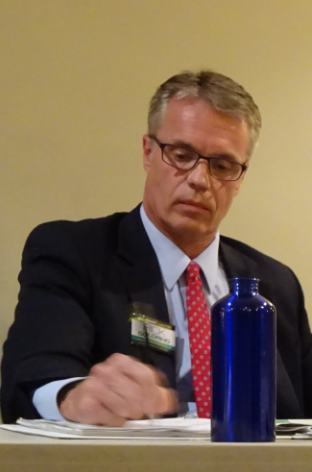 During the ward four debate Rick Goldring said he was in favour of a Ranked Ballot approach to municipal elections. Would he be Mayor today if that approach had been in place in 2006? l Mayor Goldring would like to see that changed. In 2006 Goldring won the ward 5 council seat with just 28% of the votes cast.
The alternative that is being talked up – more than talked up actually – the Premier has mandated Ted McMeekin Minister of Community and Social Services to begin “a review of the Municipal Elections Act after the 2014 municipal elections”.
“You will ensure that the act meets the needs of communities, and that it provides municipalities with the option of using ranked ballots in future elections, starting in 2018, as an alternative to first-past-the-post,”
What is Ranked Voting ?
Mayor Goldring was well briefed on the concept of Ranked voting – although he didn’t explain exactly what it was all that well.
In a ranked-ballot system, voters cast ballots for preferred candidates — they mark their first choice; their second choice and third choice.
If a candidate does not get more than 50% of the votes on the first count – there is an immediate recount and the second choice votes are added in. If that gives on candidate 50% of the votes that candidate is declared the winner. If there was no candidate with 50% the third choice votes are added in.
There is no mention in the explanation as to how far out this goes – one would hope that three runs at this would find a winner.
So how would this have worked in the 2006 and 2010 elections?
In 2006 the results for Mayor were:
Cam JACKSON 14941
Joan LOUGHEED 13687
Rick BURGESS 12658
Philip PAPADOPOULOS 1393
Stephen KOLCUN 147
 Cam Jackson: Election night 2010 Where would the Burgess, Papadopolous and Kolcun votes have gone if the Ranked balloting approach had been used. There are a lot of reasons to believe Burlington would not have had that four year Cam Jackson experience.
In Ward 4 the results were:
Jack DENNISON 3364
Frank McKEOWN 2517
John VERSLUIS 2085
Jeff ROTTAR 1010
Ross HICKS 915
It would be a stretch to think that the three lowest vote getters would split evenly between McKeown and Dennison. Would McKeown have won? Had he – he would not have been available to serve as Goldring’s Chief of Staff for the first half of the 2010-2014 term – and that would have made for a much different form of leadership from Goldring.
In 2006 the count was:
Rick GOLDRING 1848
Casey COSGROVE 1368
Fred SUTER 1185
Sam SARRAF 647
Bill BASTIEN 503
Vera KURNITZKI-WEST 342
Marnie MELLISH 305
David ABBOTT 253
Stephen BAULD 243
Casey Cosgrove believes that he would have beaten Rick Goldring which suggests Goldring would never have become Mayor.
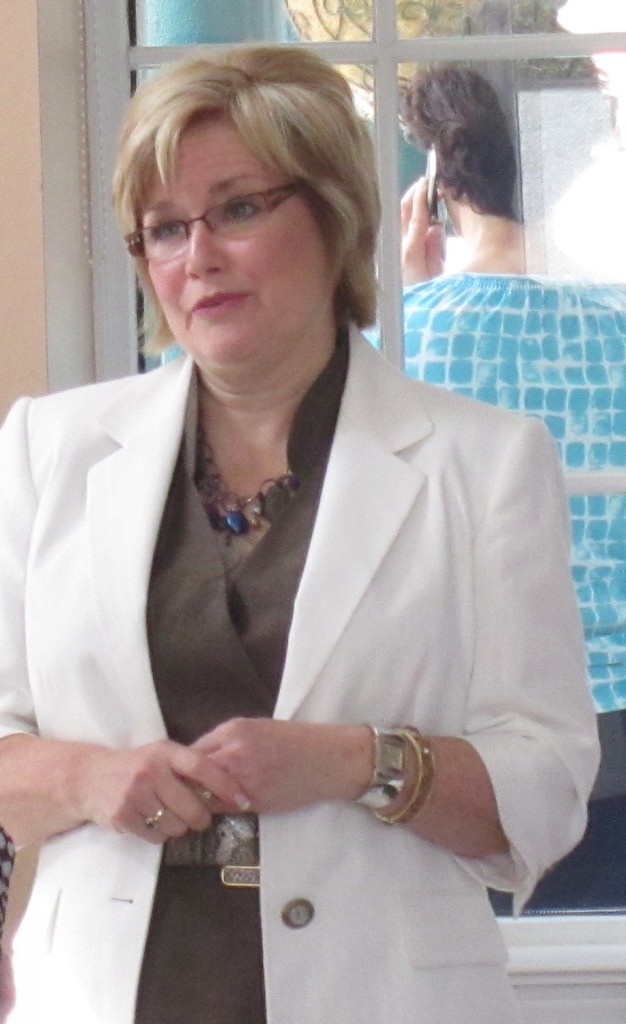 Ward 6 Councillor Blair Lancaster thinking through the answer to a question. Tends to be cautious. In 2010 the cliff hanger was the race for ward 6 where Mark Carr gave Blair Lancaster a really good run. Had he lived in the ward he might have taken it. Doubtful if ranked voting would have given the seat in 2010.
Blair LANCASTER 2,574 ELECTED
Mark CARR 2,449
Christopher MULHERN 575
Robb HERRIOT 248
Phil BUCK 176
The process continues until a candidate wins a simple majority of 50 per cent plus one.
Proponents argue it is more democratic, curbs vote-splitting, and leads to less polarizing politics because candidates run less negative campaigns over fears of alienating potential second-choice supporters.
Those opposed to the change warn ranked ballots can be confusing for voters — even though under the current “first-past-the-post” system, candidate routinely win with far less than 50 per cent of the vote.
Many think the municipal electoral system needs an overhaul. A ranked ballot system, for example, would make municipal elections less polarizing and produce a more accurate picture of what voters want.
In ranked-ballot voting, a candidate must secure a majority and wins if he or she has the most first-place votes; if the vote does not produce a true majority, an instant run-off would determine the winner.
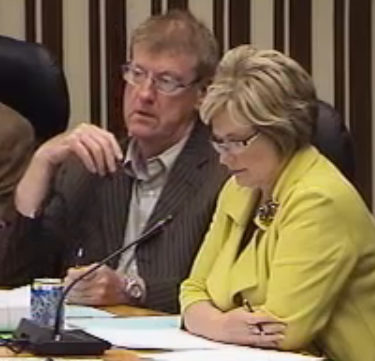 Would Councillors Sharman and Lancaster have been elected in 2010 has Ranked Balloting been in place? Currently, the “first past the post” system dictates the candidate with the highest number of votes wins.
When members of the Legislature are appointed to Cabinet they receive a “mandate” letter from the Premier in which what is expected of the minister is set out. These are usually confidential documents but Premier Wynne released them this time.
Mandate letters are the marching orders; “There aren’t too many surprises in them,” said Wynne.
In her mandate letter to Ted McMeekin, Wynne spells out the importance of leading “from the activist centre” with democratic reforms.
“We will place emphasis on partnerships with businesses, communities and people to help foster continued economic growth and make a positive impact on the lives of every Ontarian,” the premier wrote.
“This collaborative approach will shape all the work we do. It will ensure we engage people on the issues that matter the most to them, and that we implement meaningful solutions to our shared challenges.”
Ranked voting will challenge the way some municipal politicians have held their seats for so long.

|
|
 By Pepper Parr
By Pepper Parr





















 “We encourage people to go to our website and take the pledge. A friendly challenge between municipalities can be followed on the map. Take the HRPS Pledge and watch the numbers in your municipality grow” suggest the police.
“We encourage people to go to our website and take the pledge. A friendly challenge between municipalities can be followed on the map. Take the HRPS Pledge and watch the numbers in your municipality grow” suggest the police. 

 Toronto (2007); “Wild Wood” Haliburton Forest Preserve, Haliburton (2007); “The Forest for the Trees” Galleria di Arte Contemporanea, La Spezia, Italy (2007); “Ice Follies 2006”, WKP Kennedy Gallery, North Bay (2006); “Gold Leaf” (performance), Art Gallery of Ontario (2005); “Shorelines”, MacLaren Art Centre, Barrie (2005); “Exchange-Changing the Landscape”, The Tree Museum (2004); “SPASM II”, Saskatoon (2004); “The Geumgang Nature Art Project”, Korea (2002); “CAFKA/Power to the People”, Kitchener (2002); “Zone 6B: Art in the Environment”, Hamilton (2000). Frank is also a member of the Hamilton-based collective TH&B, which has produced site-specific projects in Hamilton, Kingston, Toronto, Banff, Buffalo and New York.
Toronto (2007); “Wild Wood” Haliburton Forest Preserve, Haliburton (2007); “The Forest for the Trees” Galleria di Arte Contemporanea, La Spezia, Italy (2007); “Ice Follies 2006”, WKP Kennedy Gallery, North Bay (2006); “Gold Leaf” (performance), Art Gallery of Ontario (2005); “Shorelines”, MacLaren Art Centre, Barrie (2005); “Exchange-Changing the Landscape”, The Tree Museum (2004); “SPASM II”, Saskatoon (2004); “The Geumgang Nature Art Project”, Korea (2002); “CAFKA/Power to the People”, Kitchener (2002); “Zone 6B: Art in the Environment”, Hamilton (2000). Frank is also a member of the Hamilton-based collective TH&B, which has produced site-specific projects in Hamilton, Kingston, Toronto, Banff, Buffalo and New York.



 By James Smith
By James Smith


 The “advocates” once met with ward five council member Paul Sharman at what he wanted to call a private meeting held in a church. It was clear at that meeting that the residents had more information than the council member who admitted that his problem was getting information out of the Regional level of government.
The “advocates” once met with ward five council member Paul Sharman at what he wanted to call a private meeting held in a church. It was clear at that meeting that the residents had more information than the council member who admitted that his problem was getting information out of the Regional level of government.




 There isn’t much in the way of industry in the ward; The Hanson Brick Works operates at Dundas Street, there are a lot of commercial operations but all are small in nature. Emery Developments decided to build two five storey towers attached to each other with a two storey atrium at Palladium Way. The intention of the developer is to build on speculation. They were confident enough that the market was there for their offering and expected some occupancy in late 2015.
There isn’t much in the way of industry in the ward; The Hanson Brick Works operates at Dundas Street, there are a lot of commercial operations but all are small in nature. Emery Developments decided to build two five storey towers attached to each other with a two storey atrium at Palladium Way. The intention of the developer is to build on speculation. They were confident enough that the market was there for their offering and expected some occupancy in late 2015.

 The Air Park is both a problem and a significant opportunity but at this point any ideas that are being discussed come from the mind of Vince Rossi who has yet to provide anything in the way of a business. Rossi has been able to get away with dumping land fill without the required permits because no one, including Blair Lancaster, paid much attention – they bought the argument that the air park was federally regulated and no one asked any questions.
The Air Park is both a problem and a significant opportunity but at this point any ideas that are being discussed come from the mind of Vince Rossi who has yet to provide anything in the way of a business. Rossi has been able to get away with dumping land fill without the required permits because no one, including Blair Lancaster, paid much attention – they bought the argument that the air park was federally regulated and no one asked any questions. Mr. Rusin’s position ignores the 10+ year study process that was completed by the Provincial Ministry of Transportation in 2013. This study involved multiple municipalities, dozens of Public consultation meetings, and over $10 million in consulting work and transportation planning. The conclusion was that a New Niagara highway corridor is not needed in Burlington. The Stop the Escarpment Highway Coalition was an active participant in this process, along with the City of Burlington and the Halton Region. The conclusion that was reached is a great example of local community groups working with local governments. I don’t know what facts Mr. Rusin is working with other than his own personal opinion.
Mr. Rusin’s position ignores the 10+ year study process that was completed by the Provincial Ministry of Transportation in 2013. This study involved multiple municipalities, dozens of Public consultation meetings, and over $10 million in consulting work and transportation planning. The conclusion was that a New Niagara highway corridor is not needed in Burlington. The Stop the Escarpment Highway Coalition was an active participant in this process, along with the City of Burlington and the Halton Region. The conclusion that was reached is a great example of local community groups working with local governments. I don’t know what facts Mr. Rusin is working with other than his own personal opinion.
 There are lots of great policy ideas that Burlington can do on their own. Local trips on transit are not that convenient. It’s still difficult to get from Burlington to Oakville or Hamilton on transit. Working together with sister municipalities, instead of having standalone transit systems, will support the way citizens are living and working in the community. This idea requires regional thinking and cooperation and the vision a municipal mayor can give to the process.
There are lots of great policy ideas that Burlington can do on their own. Local trips on transit are not that convenient. It’s still difficult to get from Burlington to Oakville or Hamilton on transit. Working together with sister municipalities, instead of having standalone transit systems, will support the way citizens are living and working in the community. This idea requires regional thinking and cooperation and the vision a municipal mayor can give to the process.
 A loose leaf collection service is provided to Burlington residents in the fall, typically beginning the first week in November of each year. This program is in addition to the Yard Waste Collection Service provided by Halton Region Waste Services.
A loose leaf collection service is provided to Burlington residents in the fall, typically beginning the first week in November of each year. This program is in addition to the Yard Waste Collection Service provided by Halton Region Waste Services.





 Why, many people have asked, does internet voting and advance polls end on the 18th? Because the city then has to prepare the voters list for the election on the 27th. All those people who voted at the Advance poll and on-line have their names taken out of the list that the polling clerks work from.
Why, many people have asked, does internet voting and advance polls end on the 18th? Because the city then has to prepare the voters list for the election on the 27th. All those people who voted at the Advance poll and on-line have their names taken out of the list that the polling clerks work from.


 By Staff
By Staff
 1. I want to continue with the arts and culture investments that the city currently makes. The Art Gallery of Burlington, Burlington Performing Arts Centre, the Museums, Student Theatre, Drury Lane Theatre, Theatre Burlington, the Teen Tour Band along with investment in the Sound of Music Festival and our twinning relationships with Appledorn, The Netherlands and Itabashi, Japan all contribute to making Burlington a culturally vibrant city. We need to leverage our investment with the objective of broadening the reach of our various cultural programs and proceed with thoughtful implementation of the Cultural Action Plan.
1. I want to continue with the arts and culture investments that the city currently makes. The Art Gallery of Burlington, Burlington Performing Arts Centre, the Museums, Student Theatre, Drury Lane Theatre, Theatre Burlington, the Teen Tour Band along with investment in the Sound of Music Festival and our twinning relationships with Appledorn, The Netherlands and Itabashi, Japan all contribute to making Burlington a culturally vibrant city. We need to leverage our investment with the objective of broadening the reach of our various cultural programs and proceed with thoughtful implementation of the Cultural Action Plan. 1. Arts and culture are an integral part of any strong and diverse community. Enhanced quality of life for the people of Burlington is the reason I am running for Mayor, and underlies all elements of my platform. With smart growth comes enhanced arts and culture opportunities. When we build upon our already diverse and rich community, when we attract new revenue, when we recognize the importance of arts and culture and fund it accordingly, we further enrich our city and the people who call it home. We can and should capitalize on Section 37 to provide arts and culture funding within a defined radius of any new development, together with council input and desired priorities.
1. Arts and culture are an integral part of any strong and diverse community. Enhanced quality of life for the people of Burlington is the reason I am running for Mayor, and underlies all elements of my platform. With smart growth comes enhanced arts and culture opportunities. When we build upon our already diverse and rich community, when we attract new revenue, when we recognize the importance of arts and culture and fund it accordingly, we further enrich our city and the people who call it home. We can and should capitalize on Section 37 to provide arts and culture funding within a defined radius of any new development, together with council input and desired priorities.
 1. I believe that the City has some valuable Artistic and Cultural physical assets (ie: drama centre, Art Centre, Performing Arts Centre) The City is also blessed with some wonderful groups (Teen Tour Band, various Guilds and Performance organizations etc.), I think that these groups are best left to manage themselves without interference or oversight from the City. I would also like to see them be as self sufficient as possible.
1. I believe that the City has some valuable Artistic and Cultural physical assets (ie: drama centre, Art Centre, Performing Arts Centre) The City is also blessed with some wonderful groups (Teen Tour Band, various Guilds and Performance organizations etc.), I think that these groups are best left to manage themselves without interference or oversight from the City. I would also like to see them be as self sufficient as possible.



















